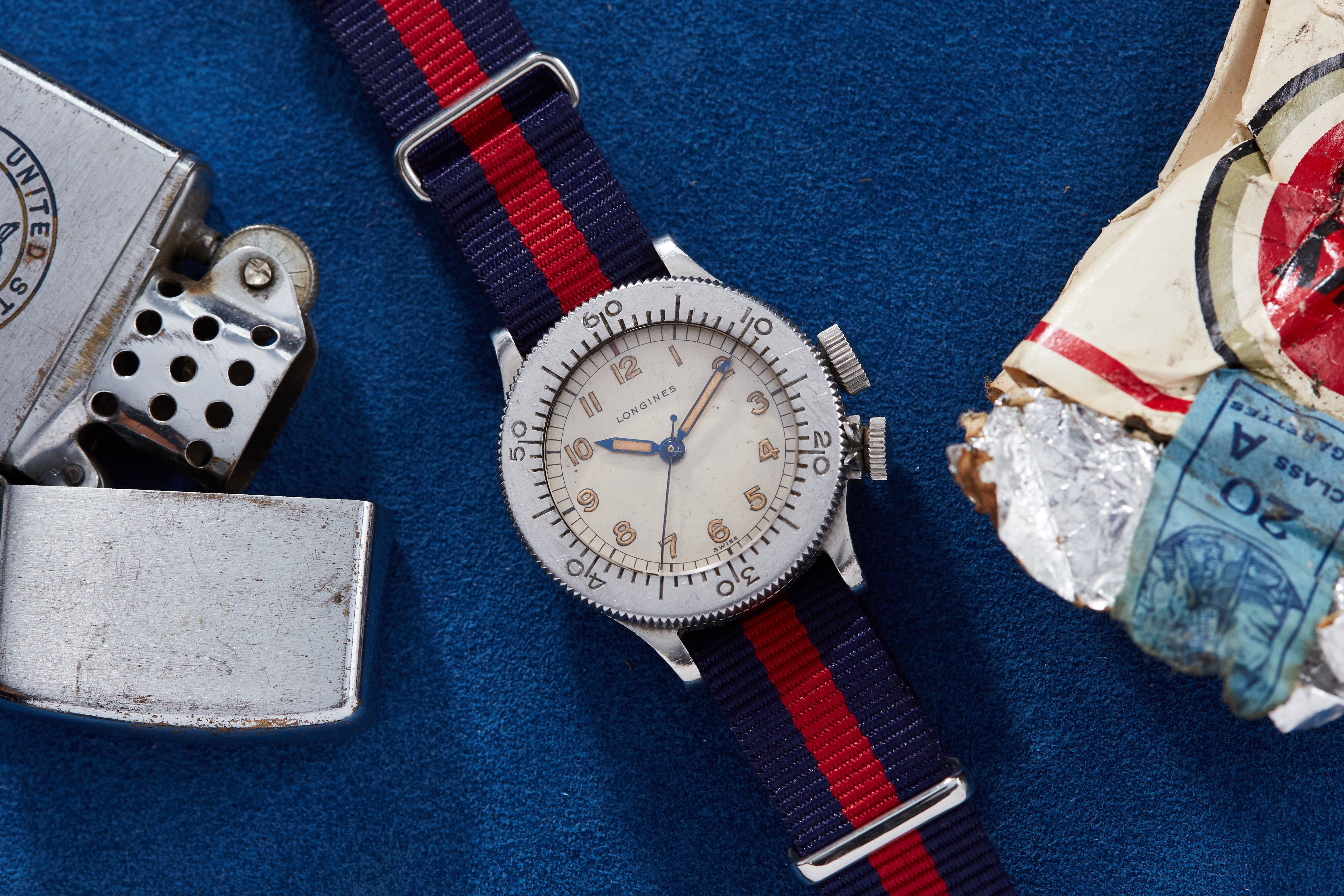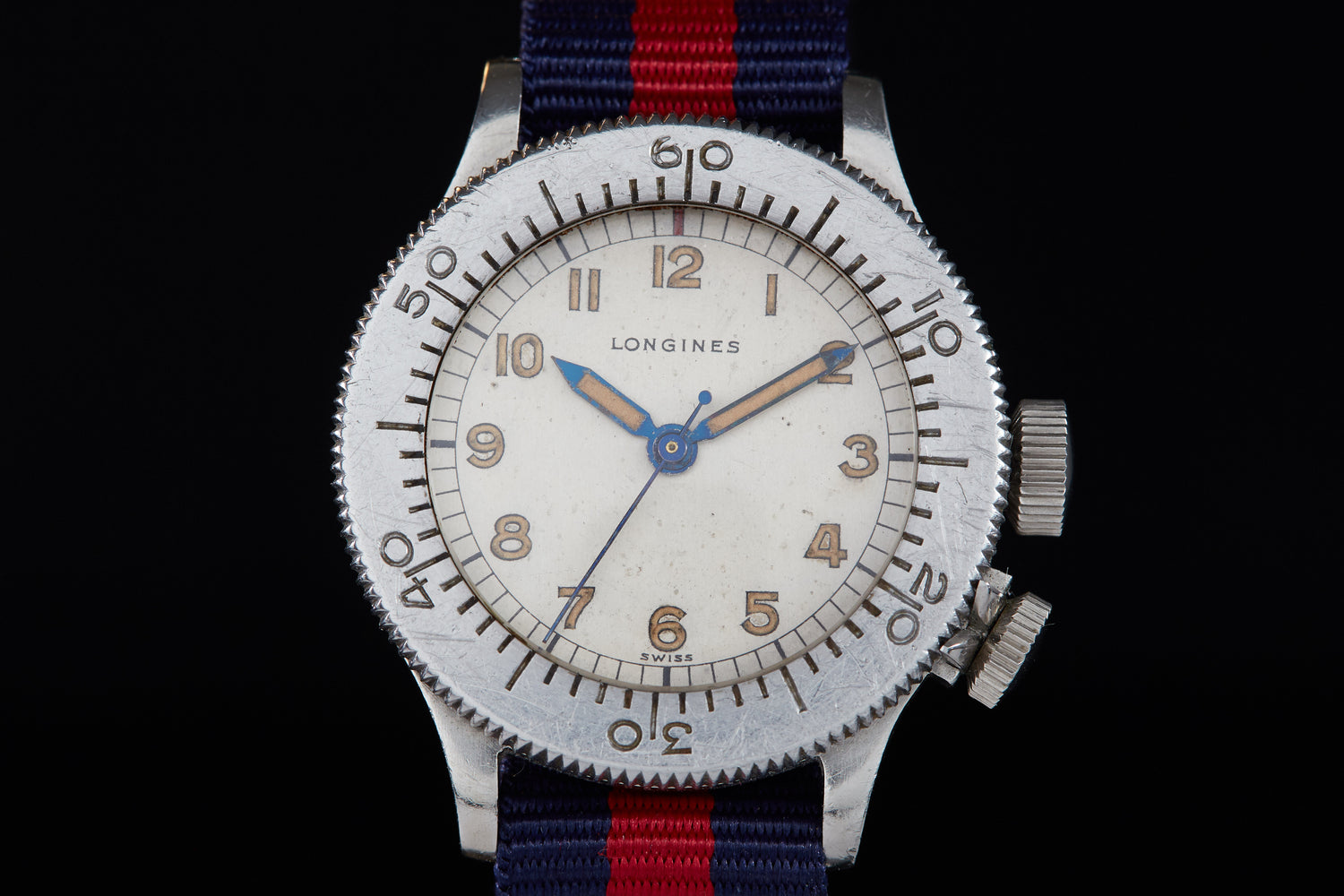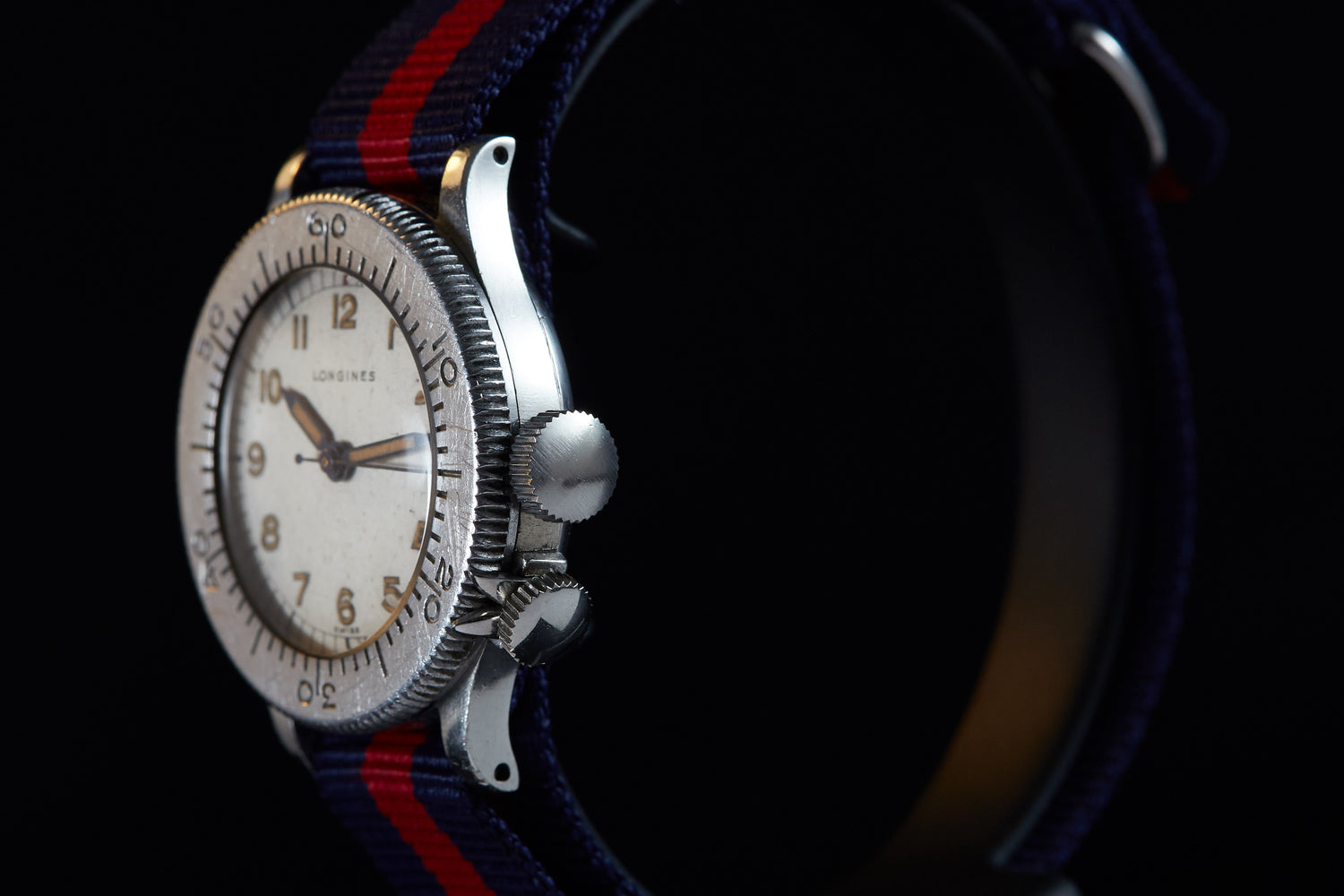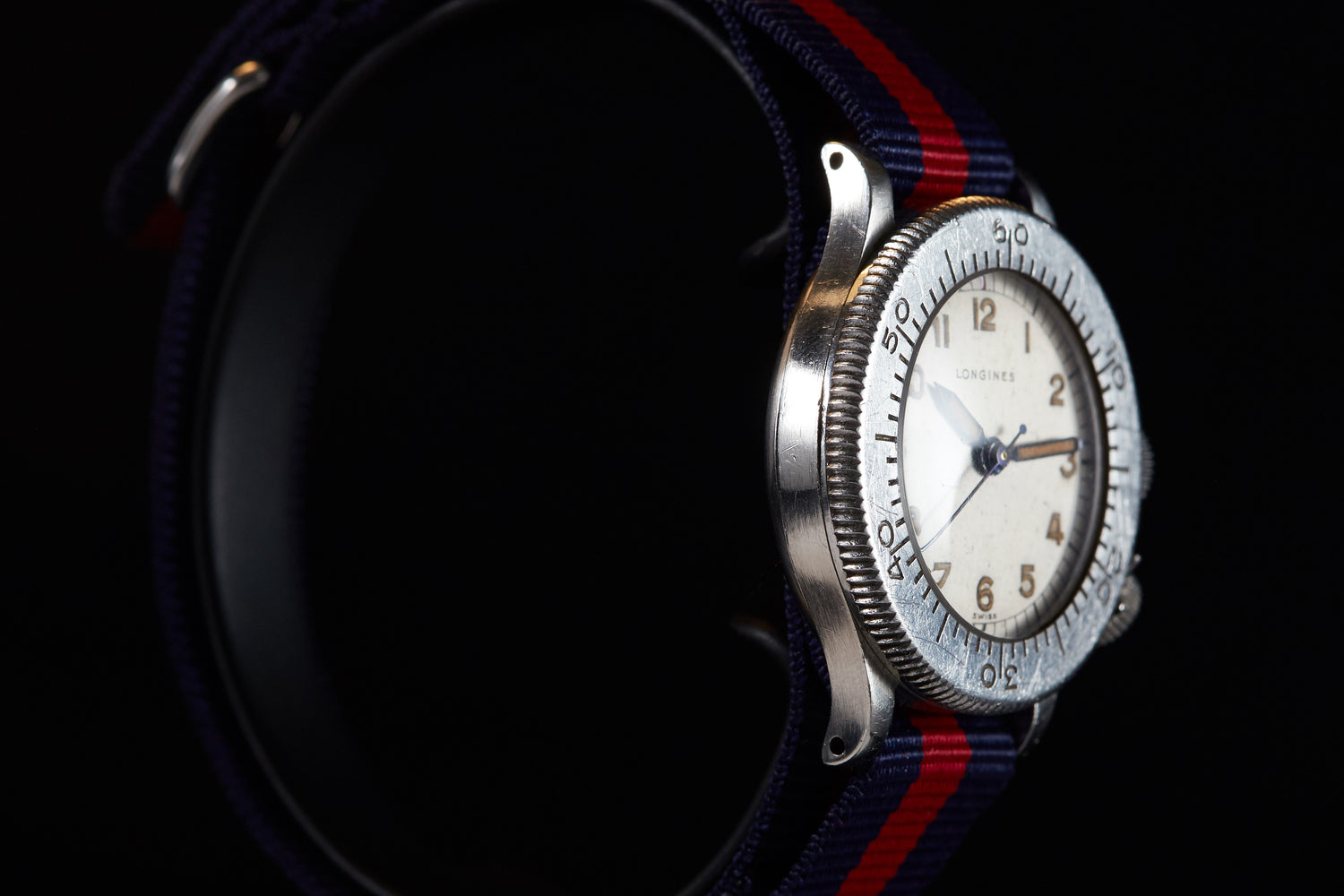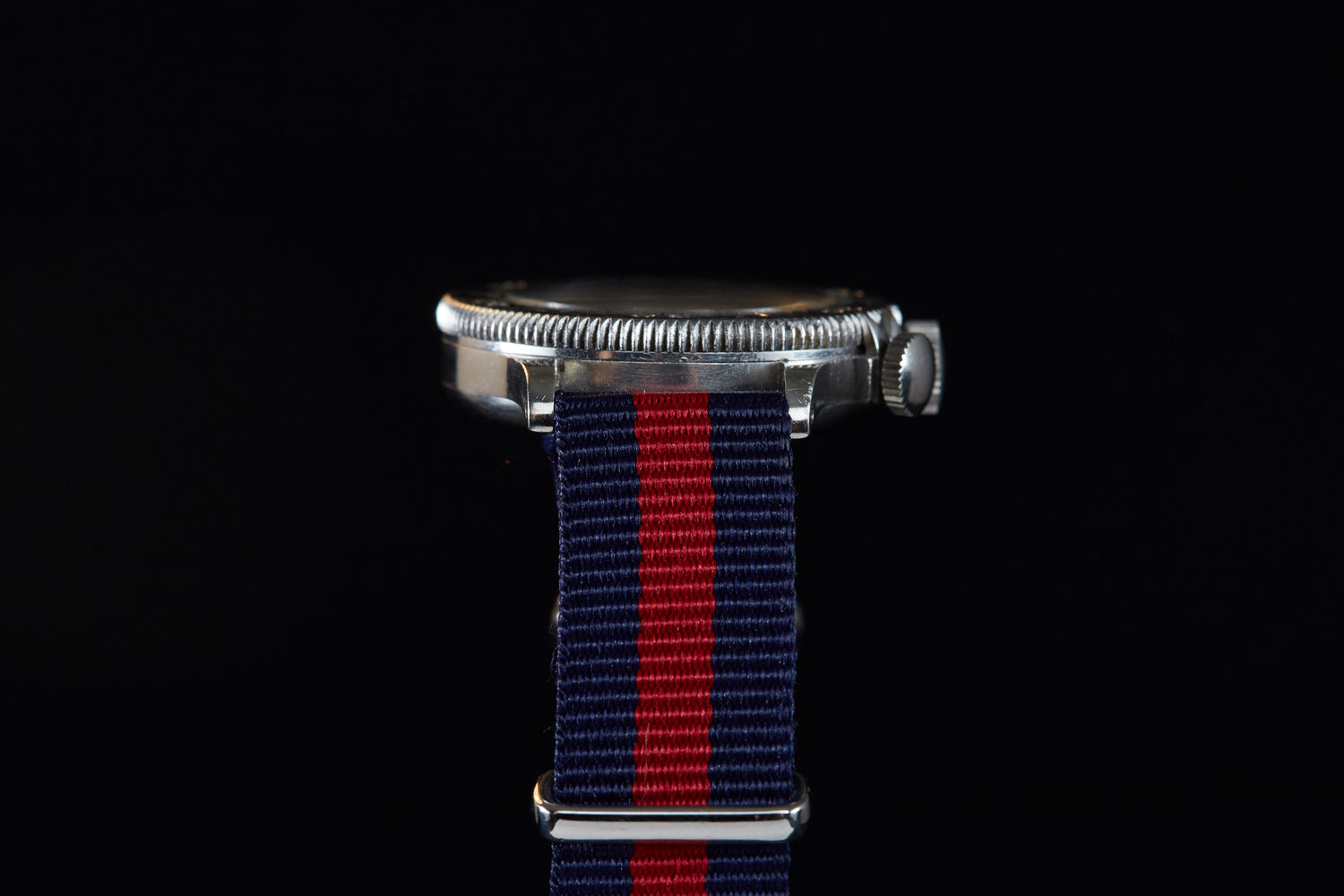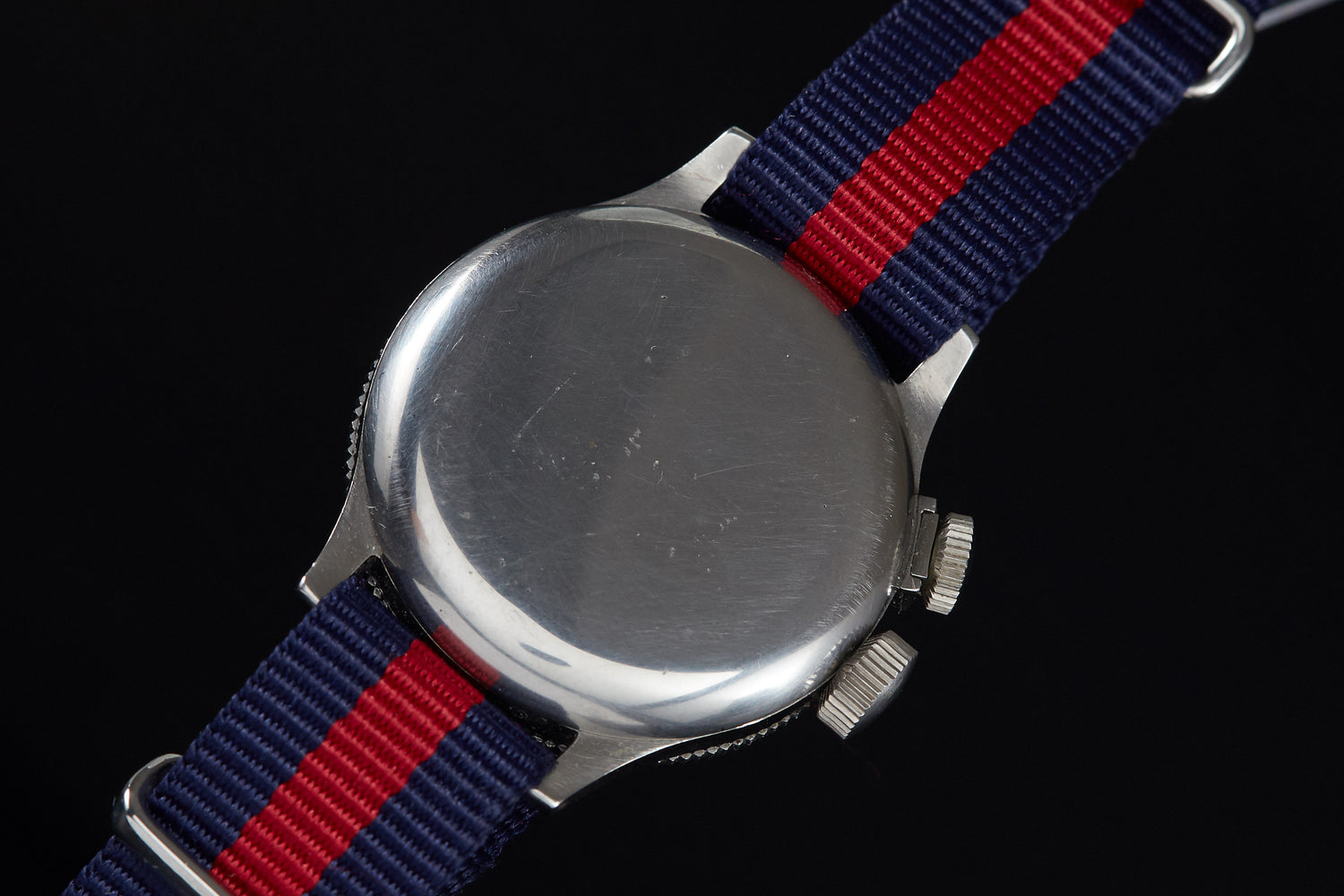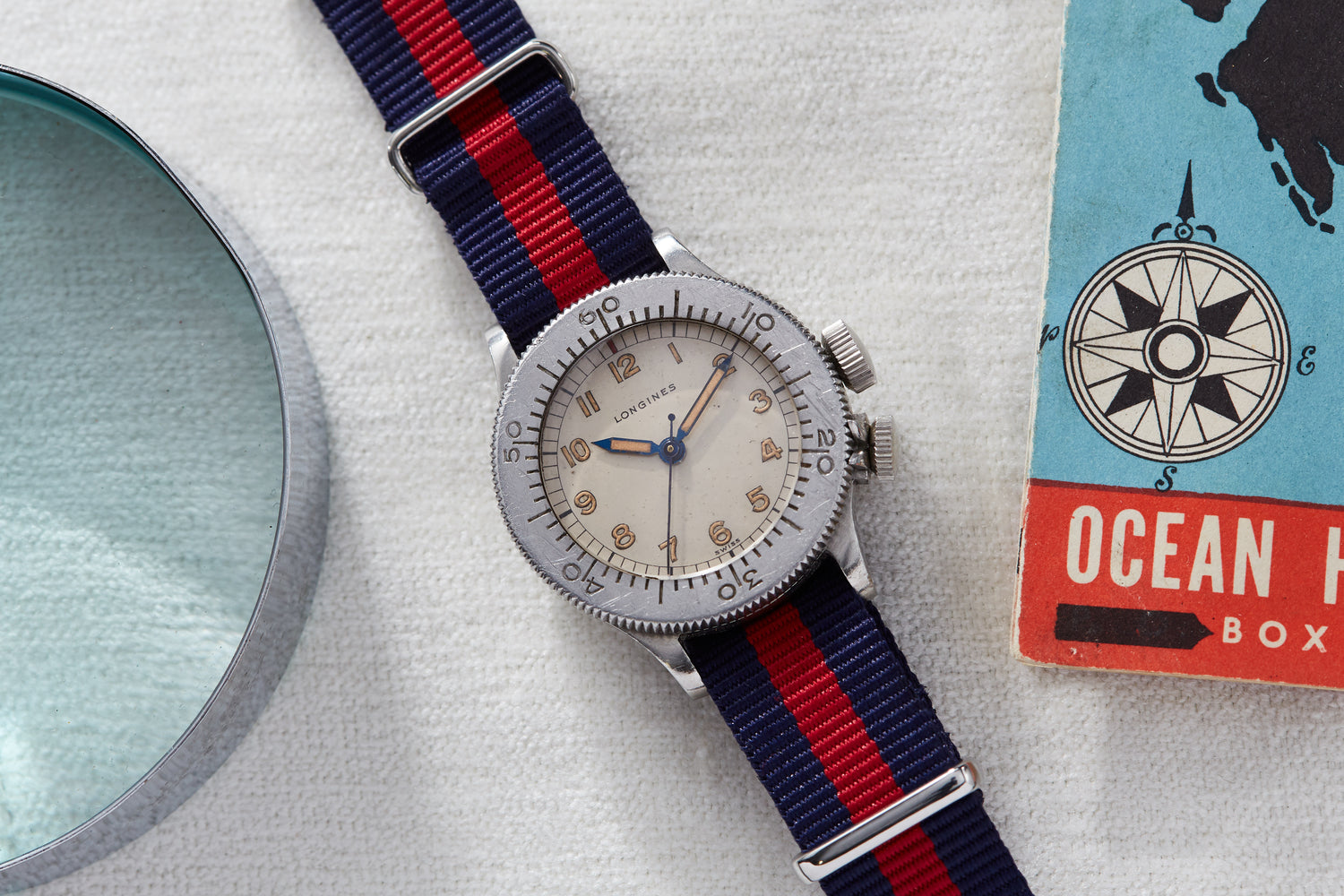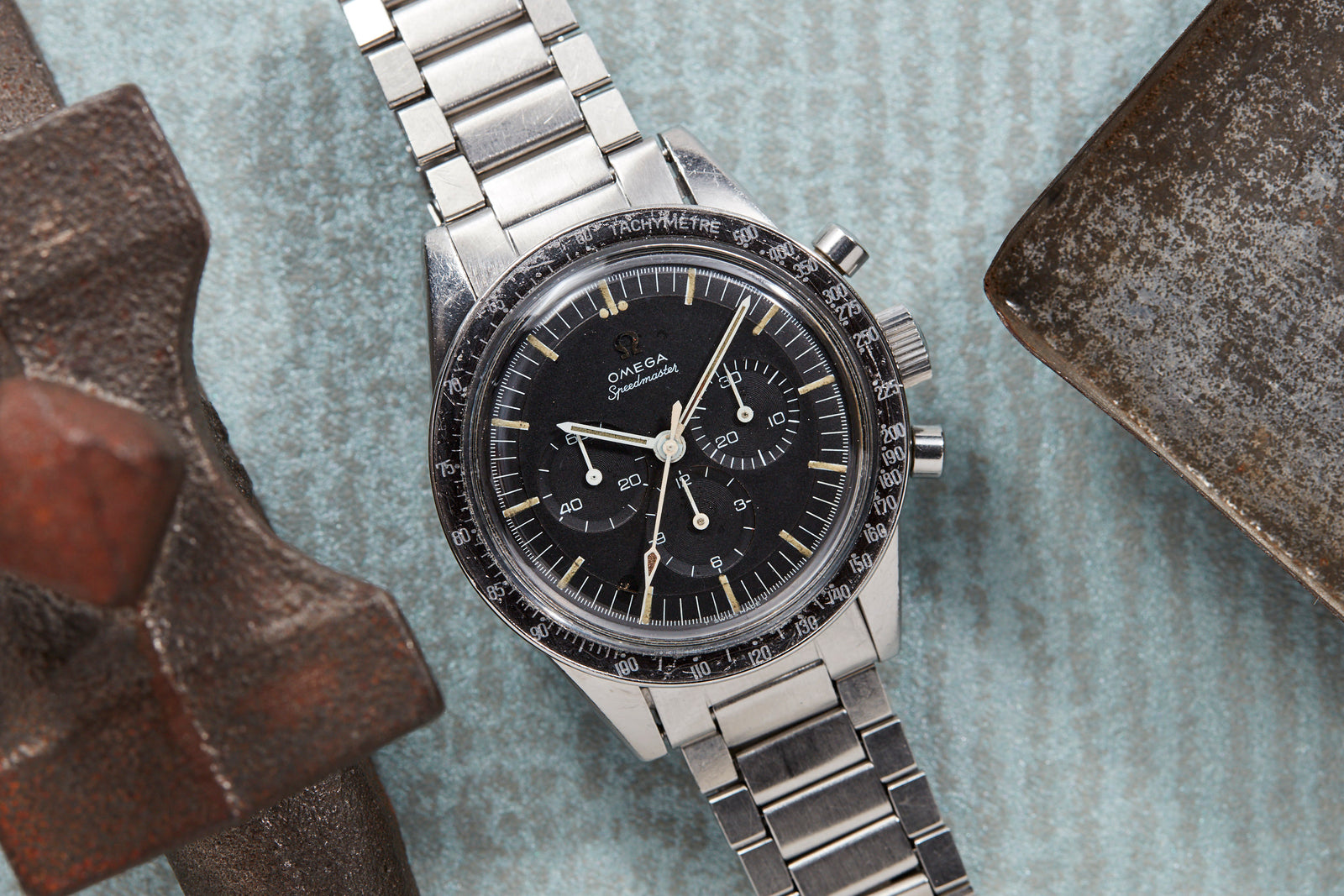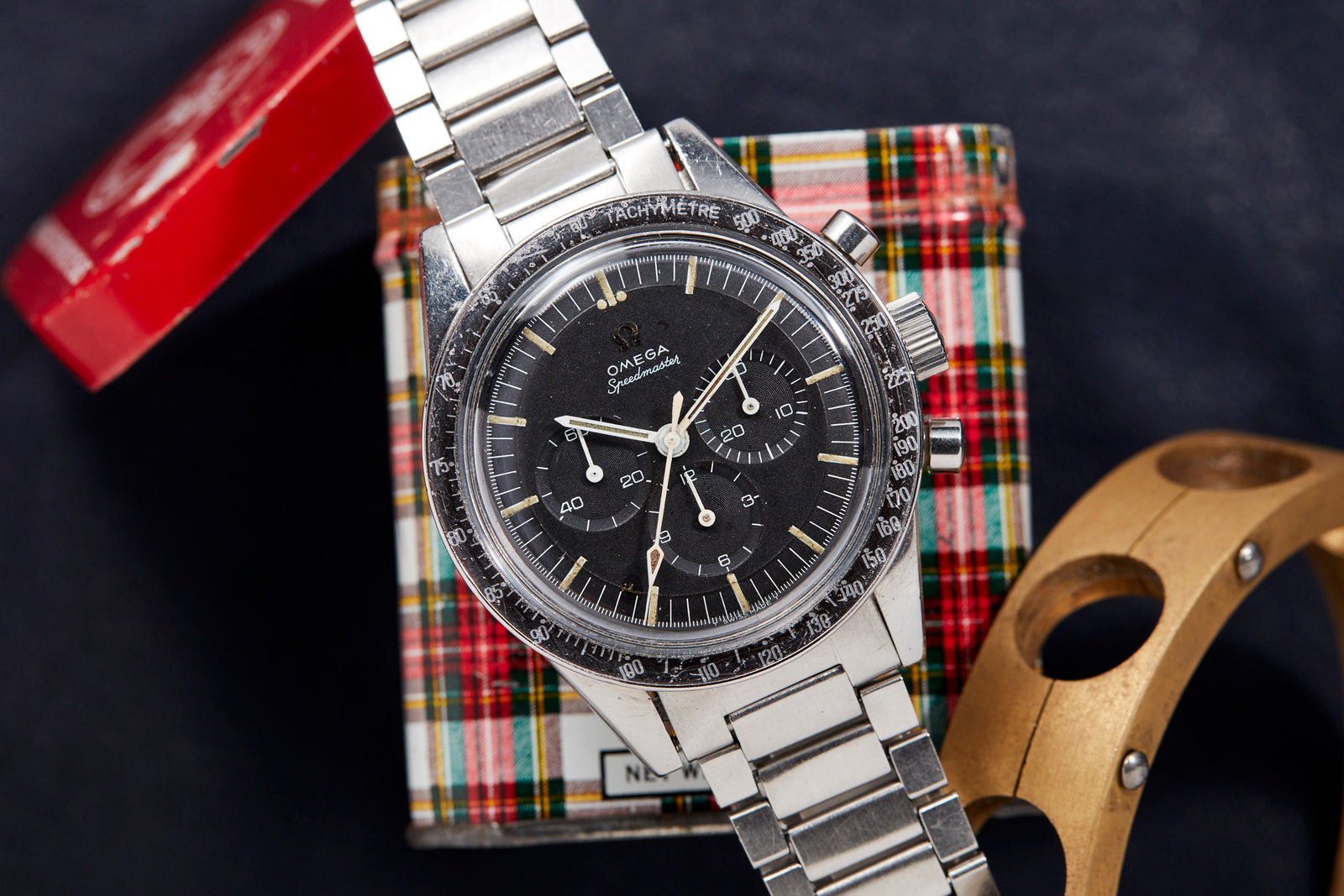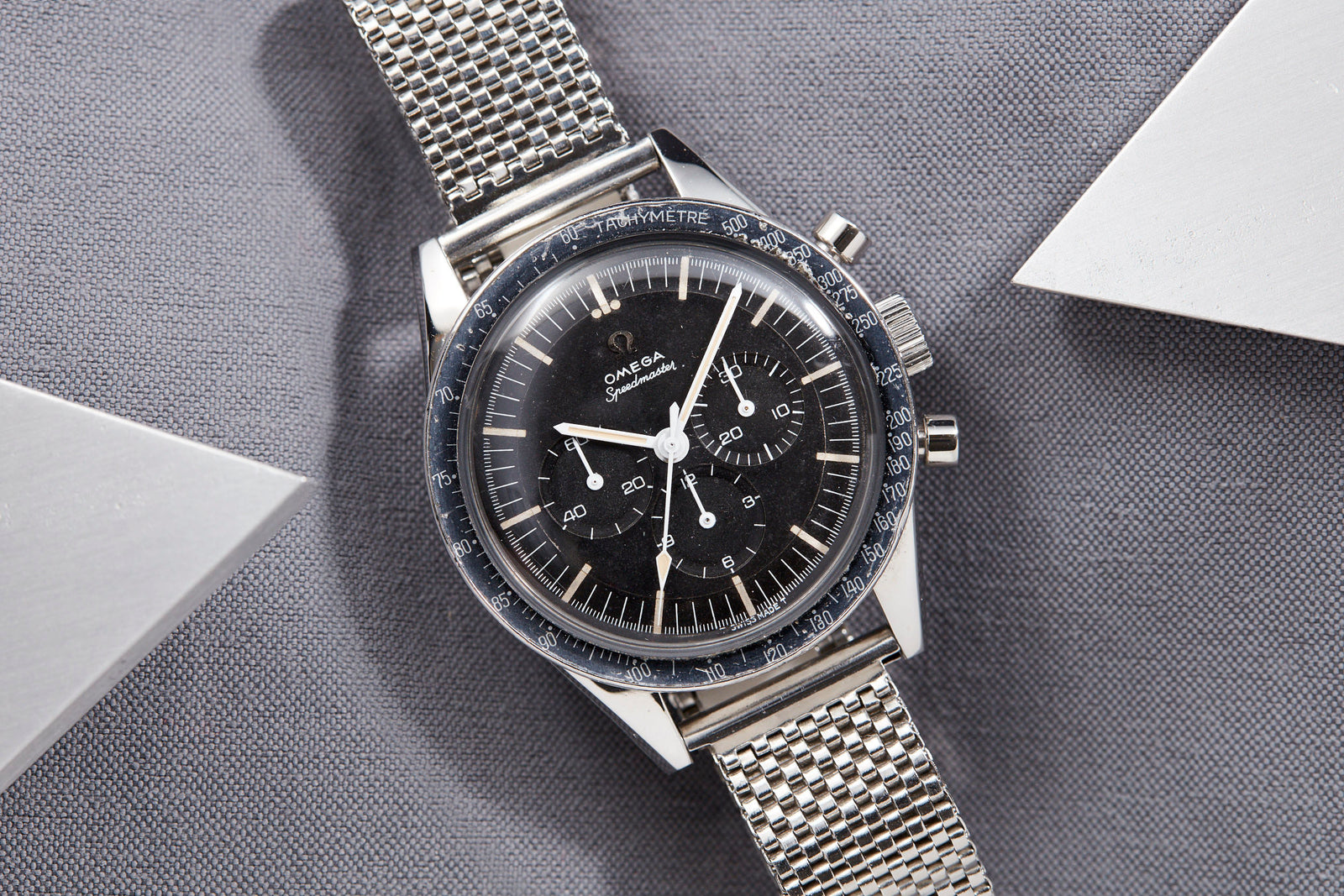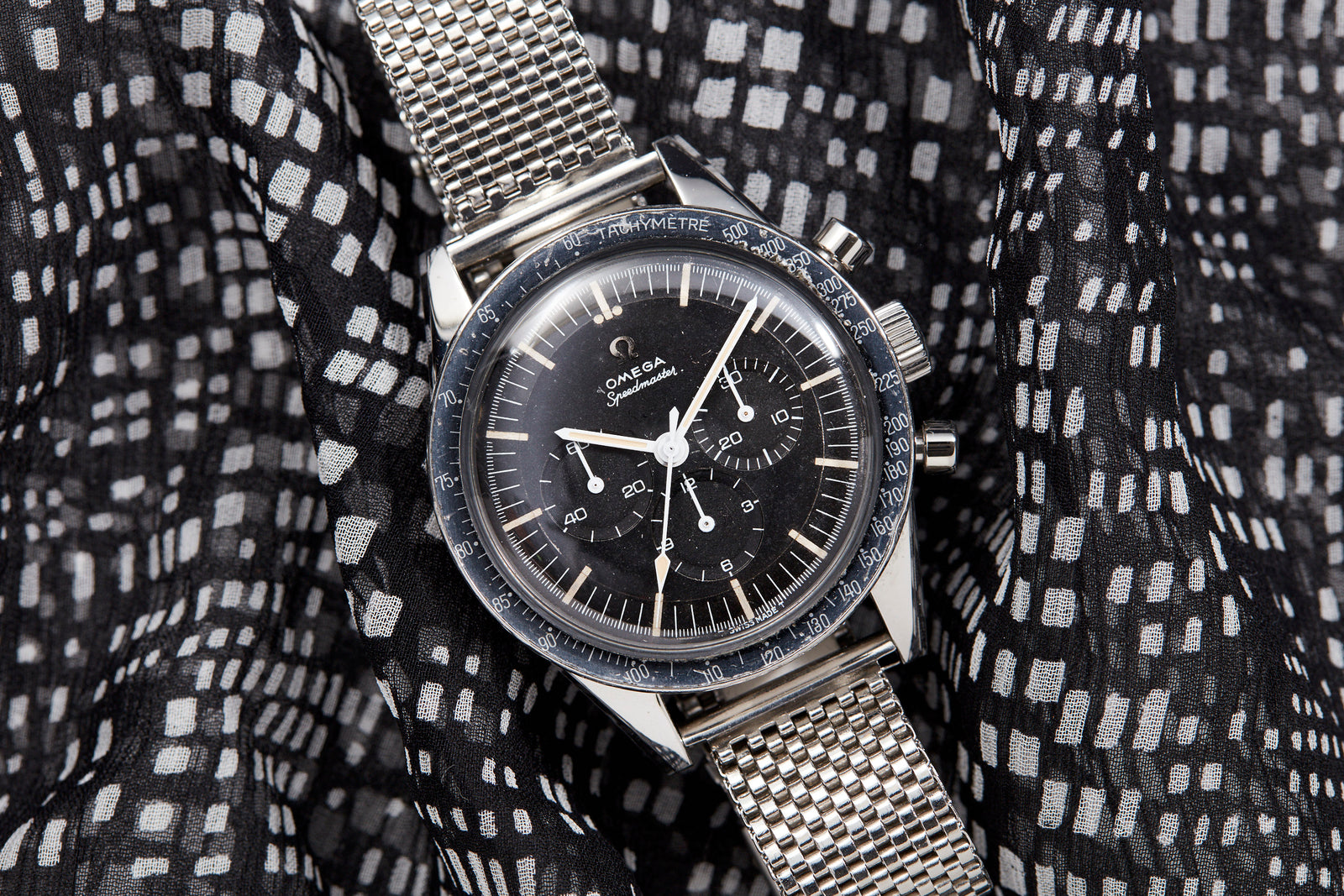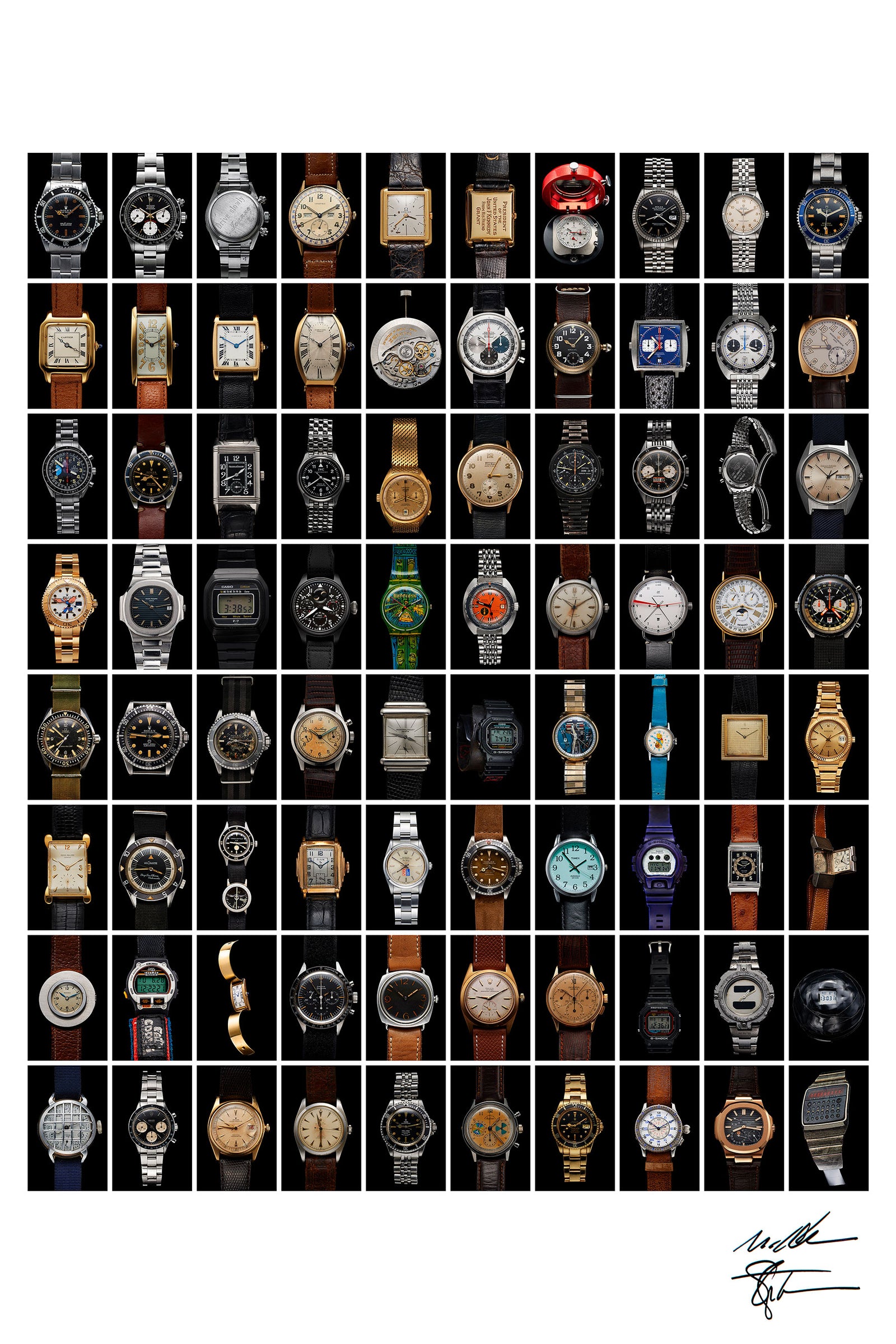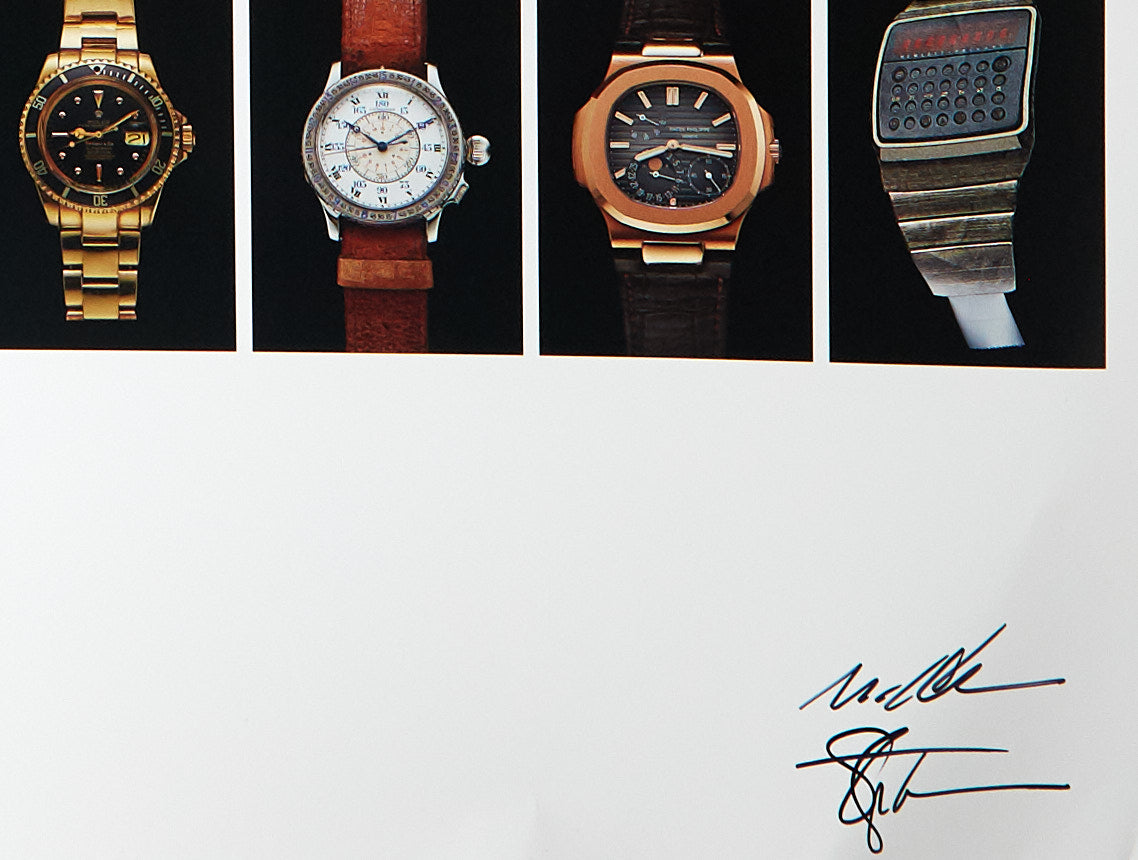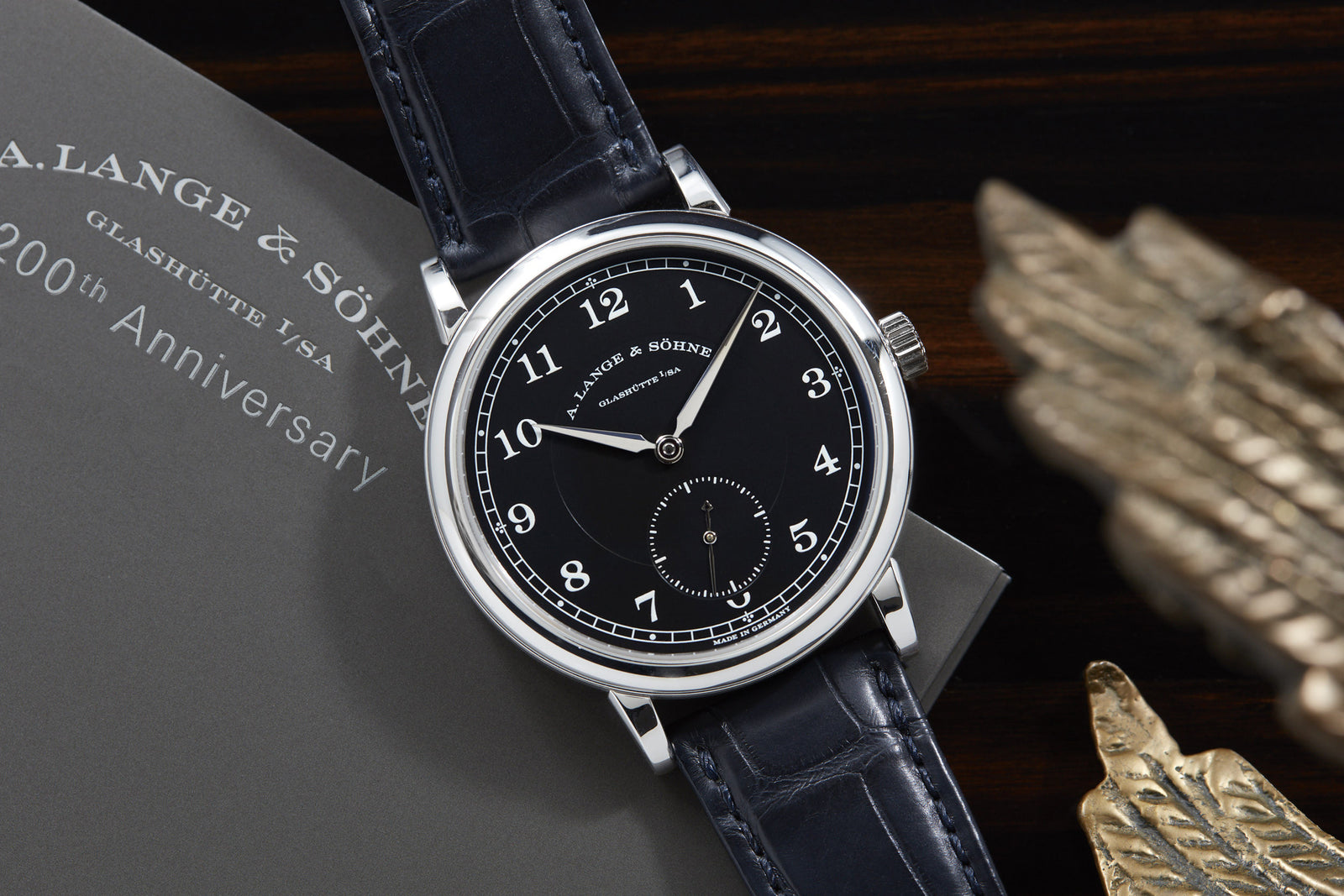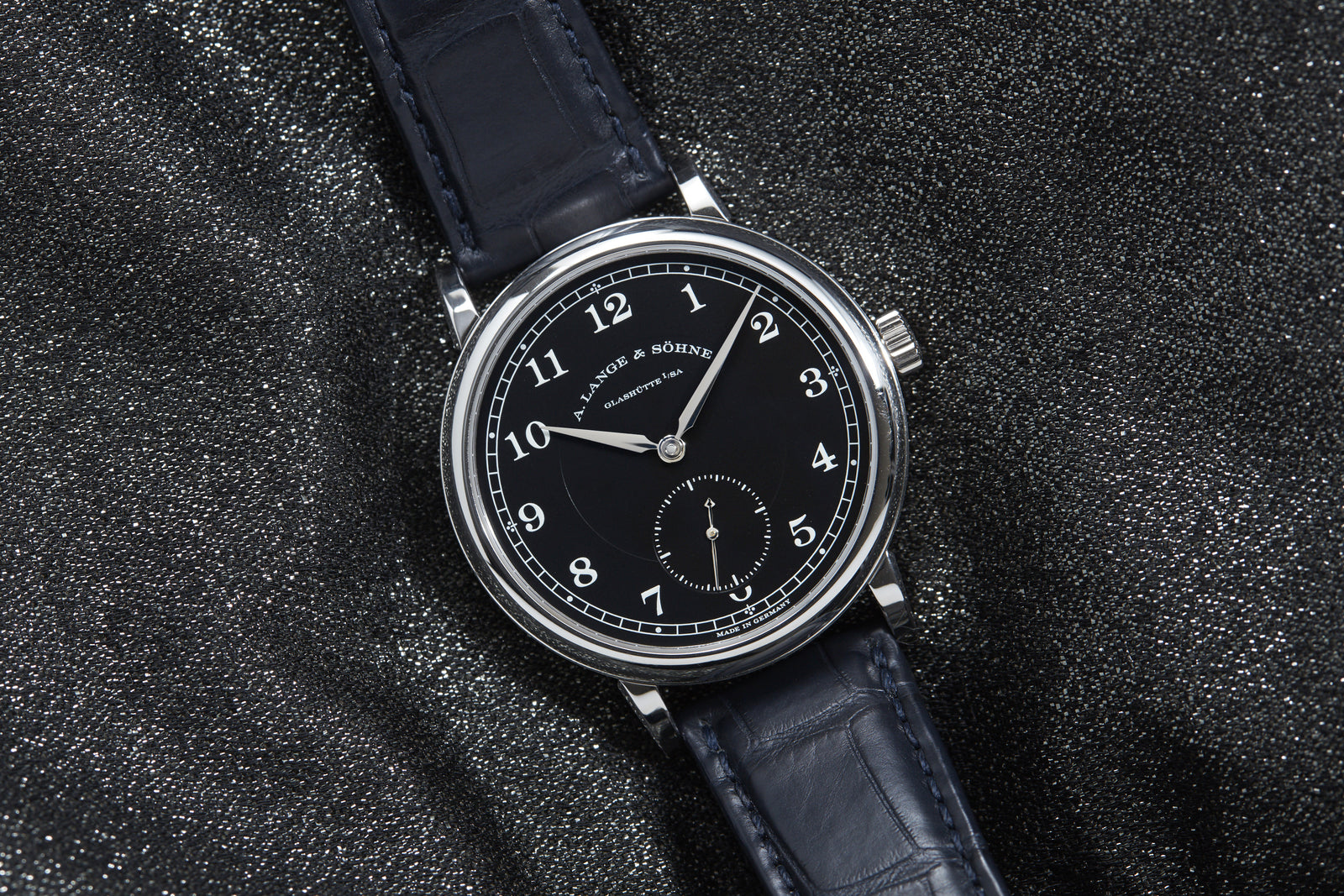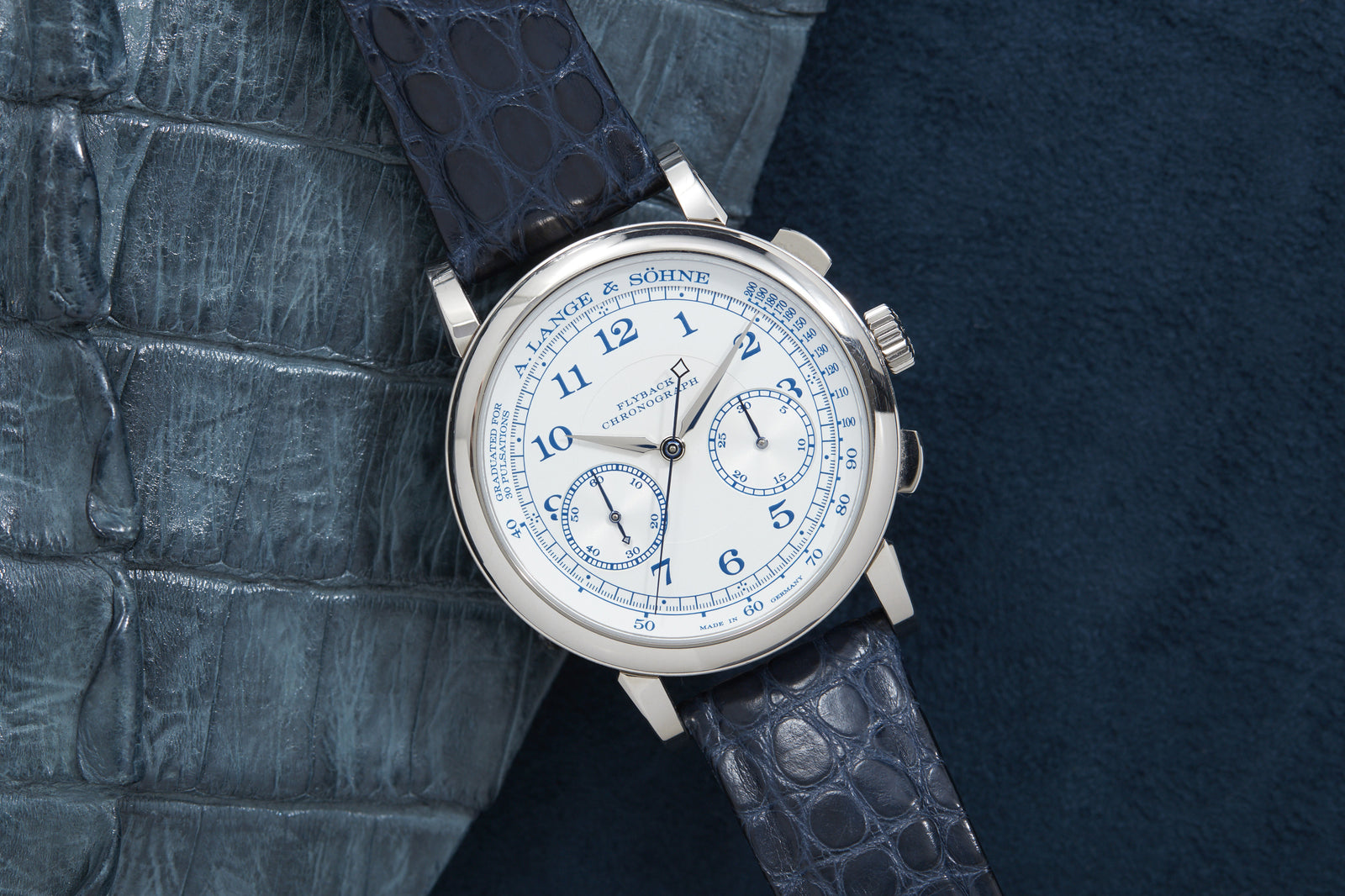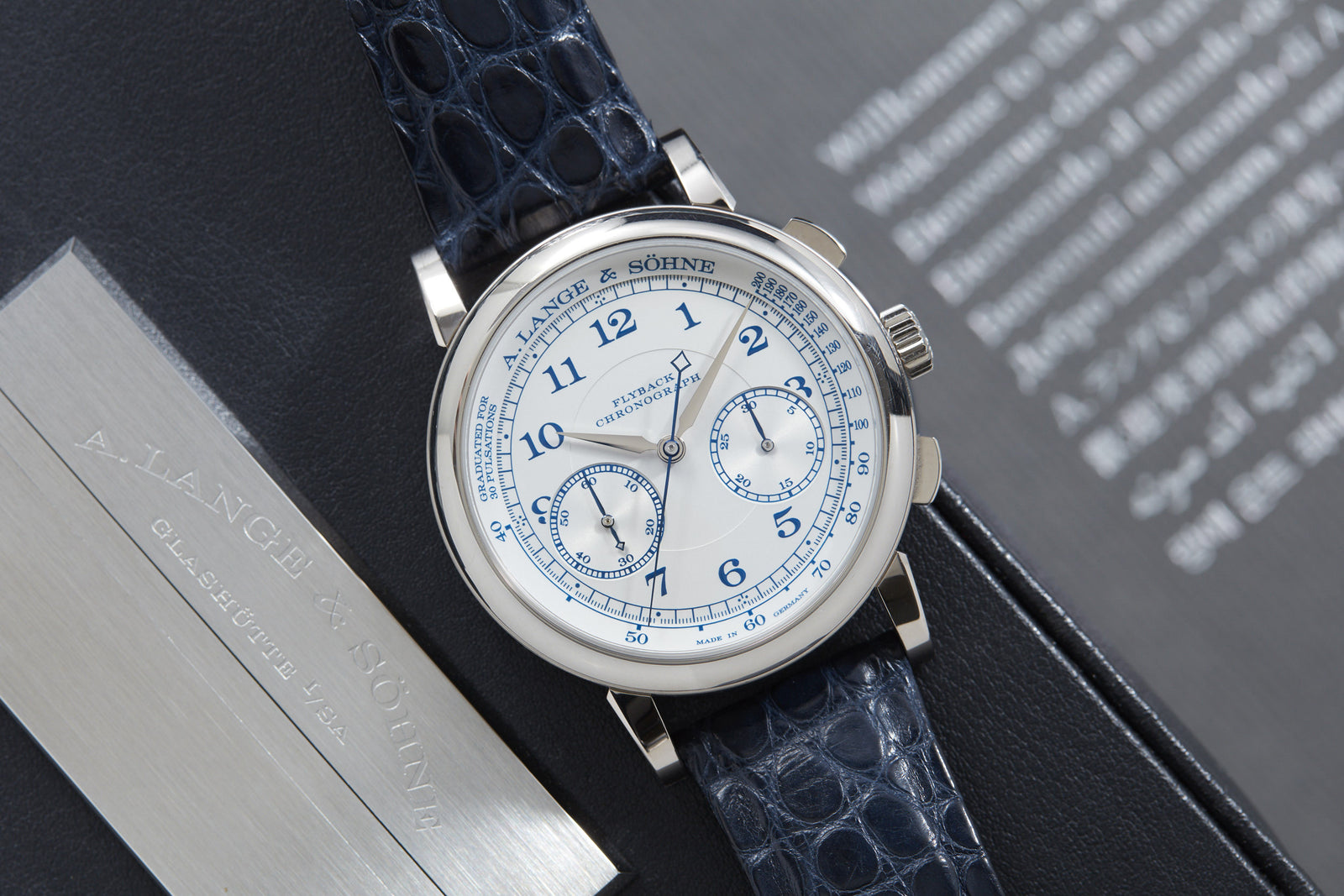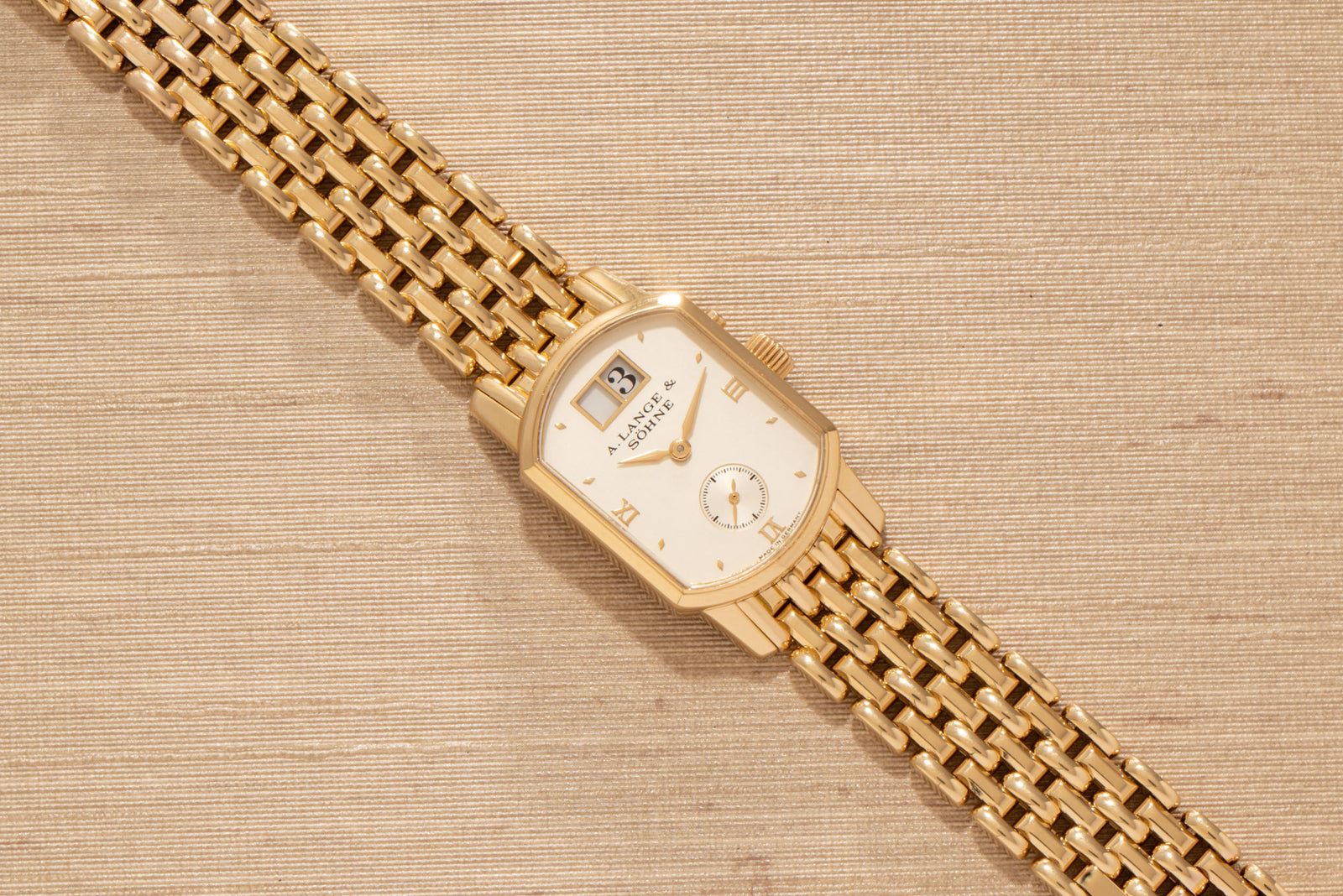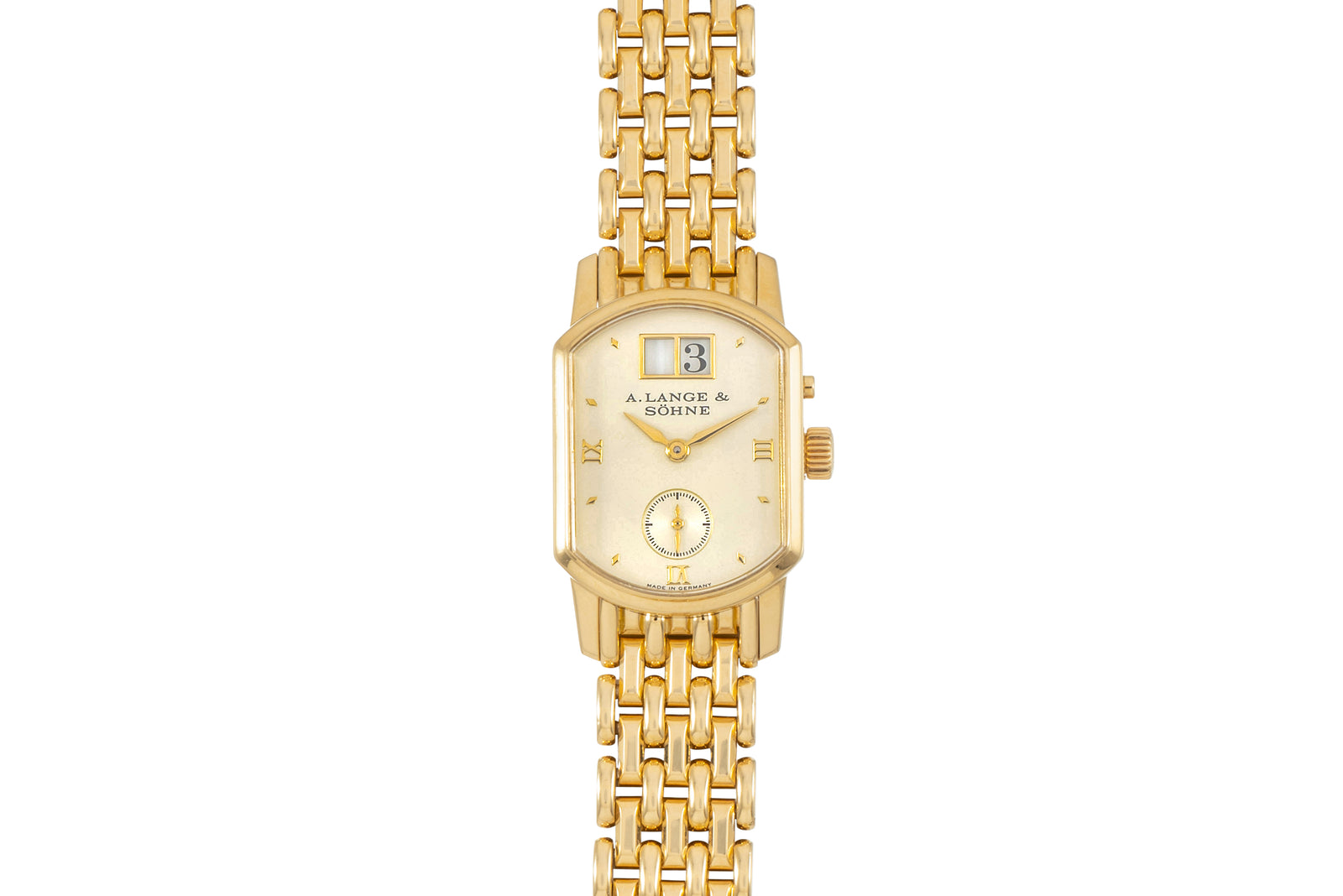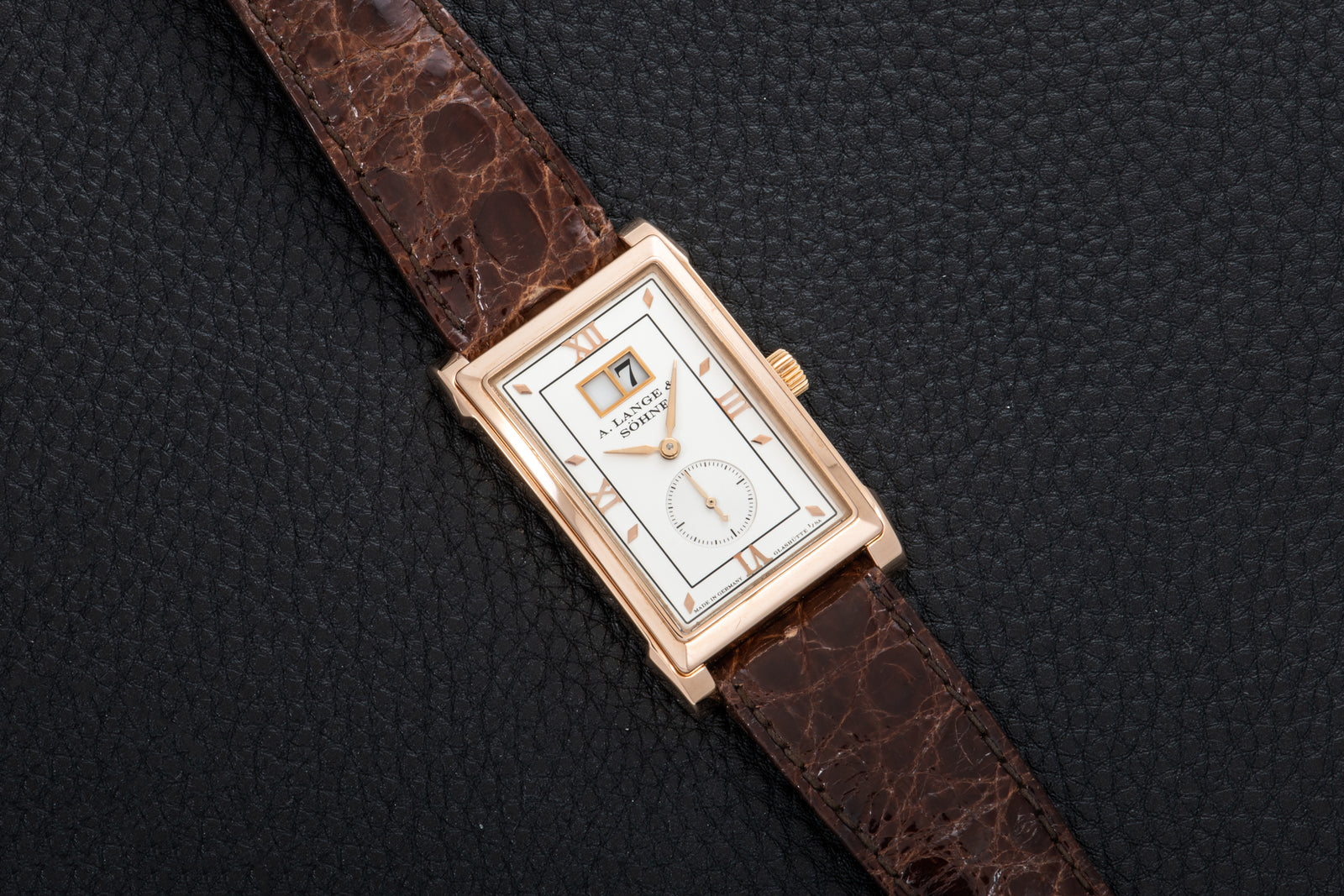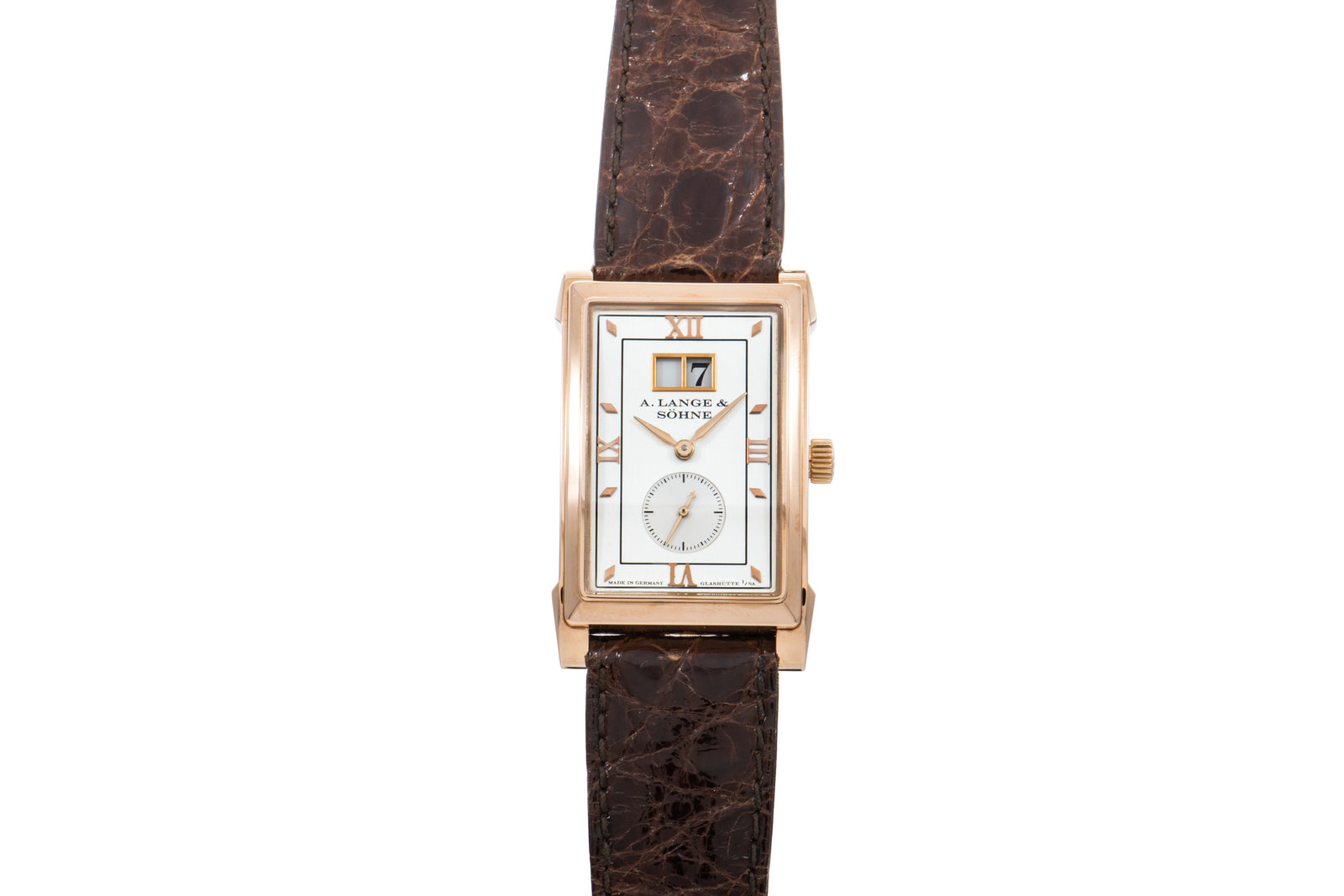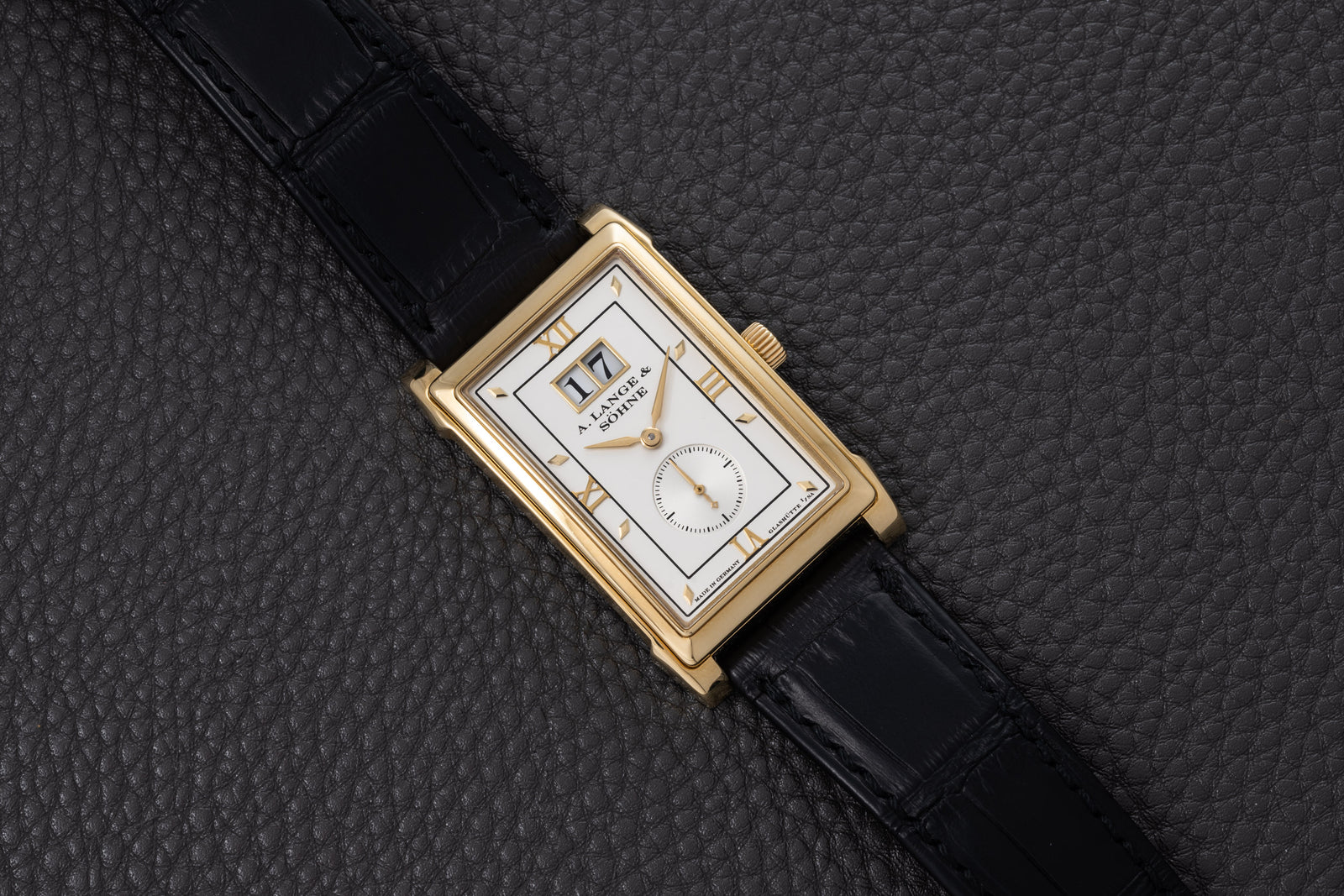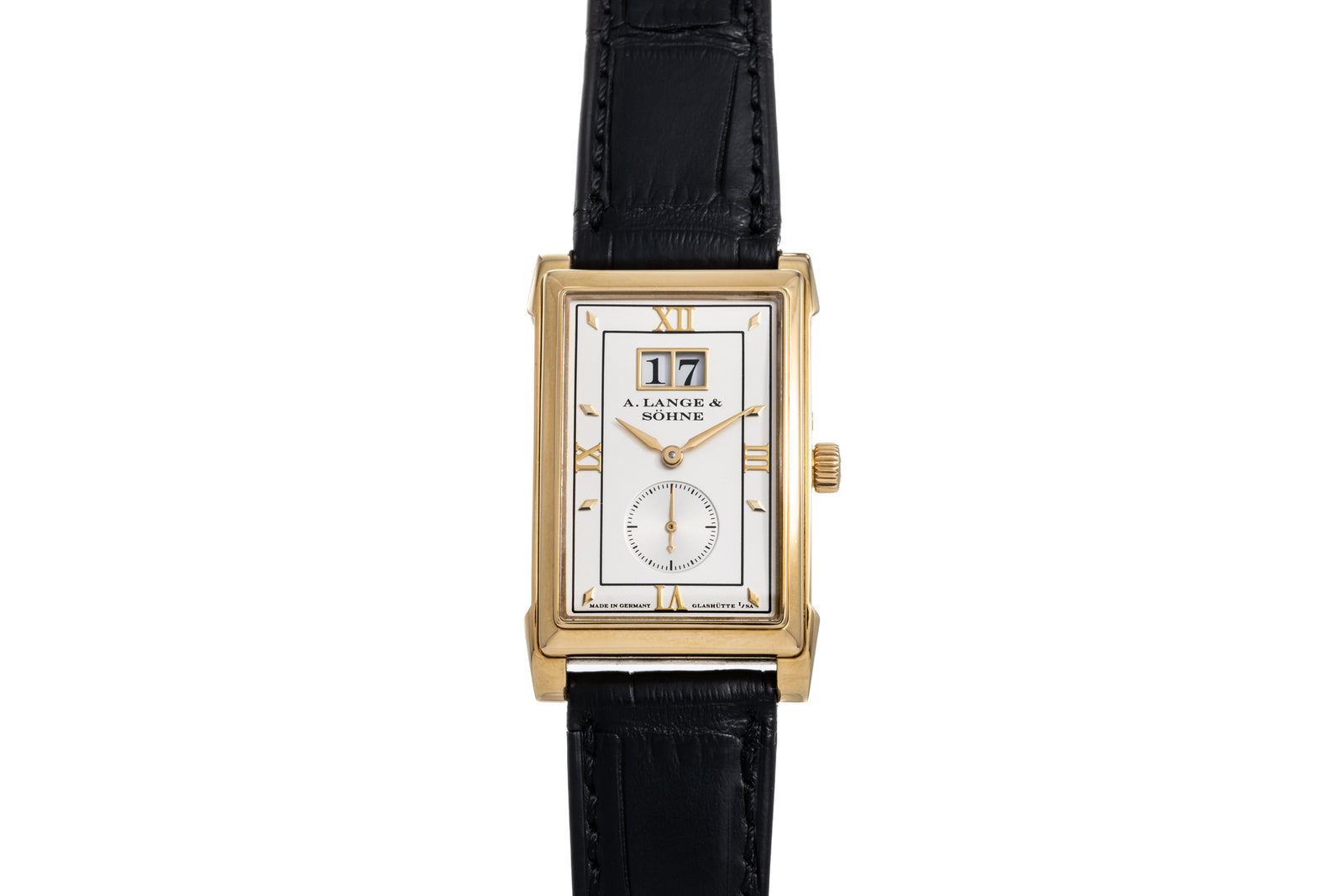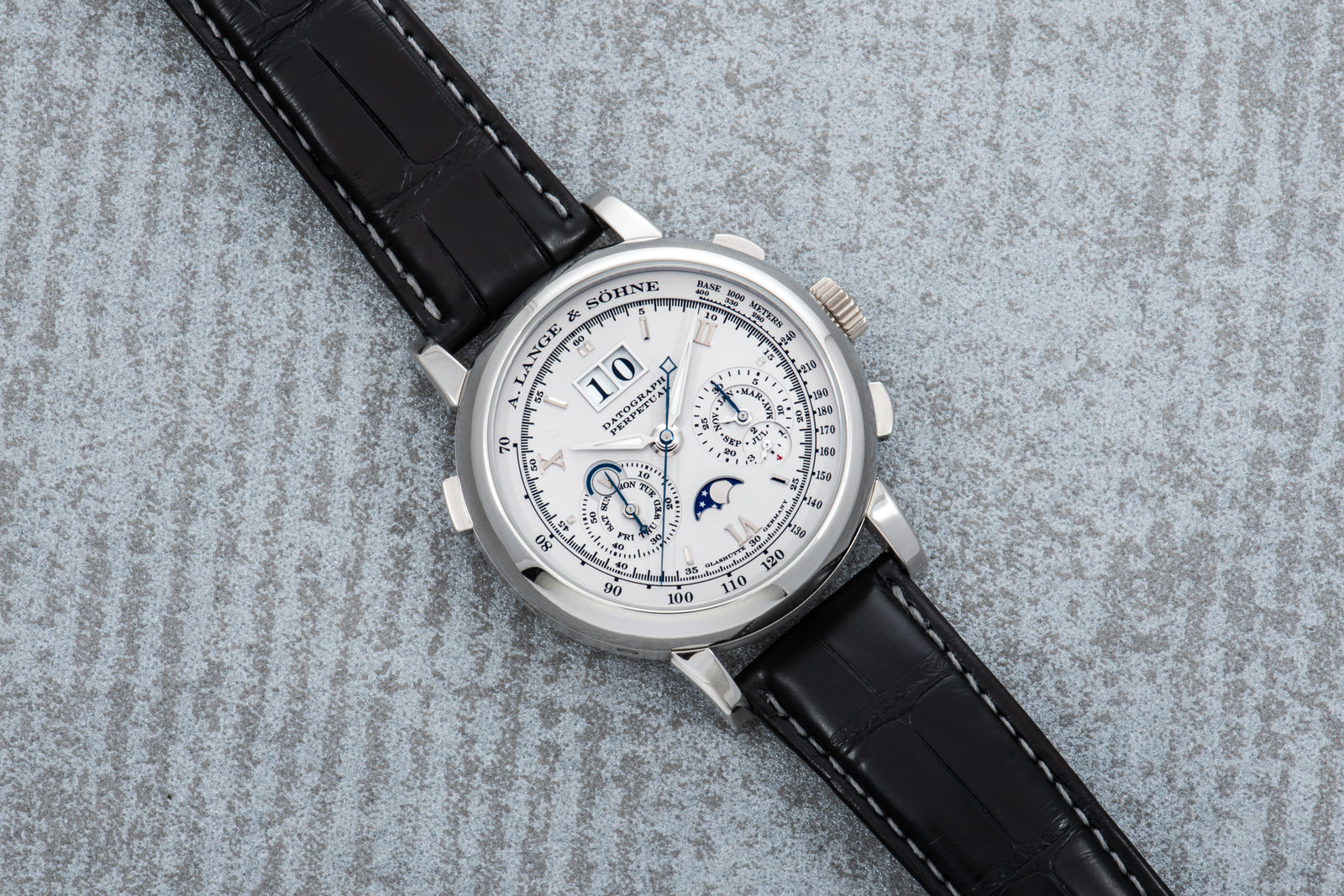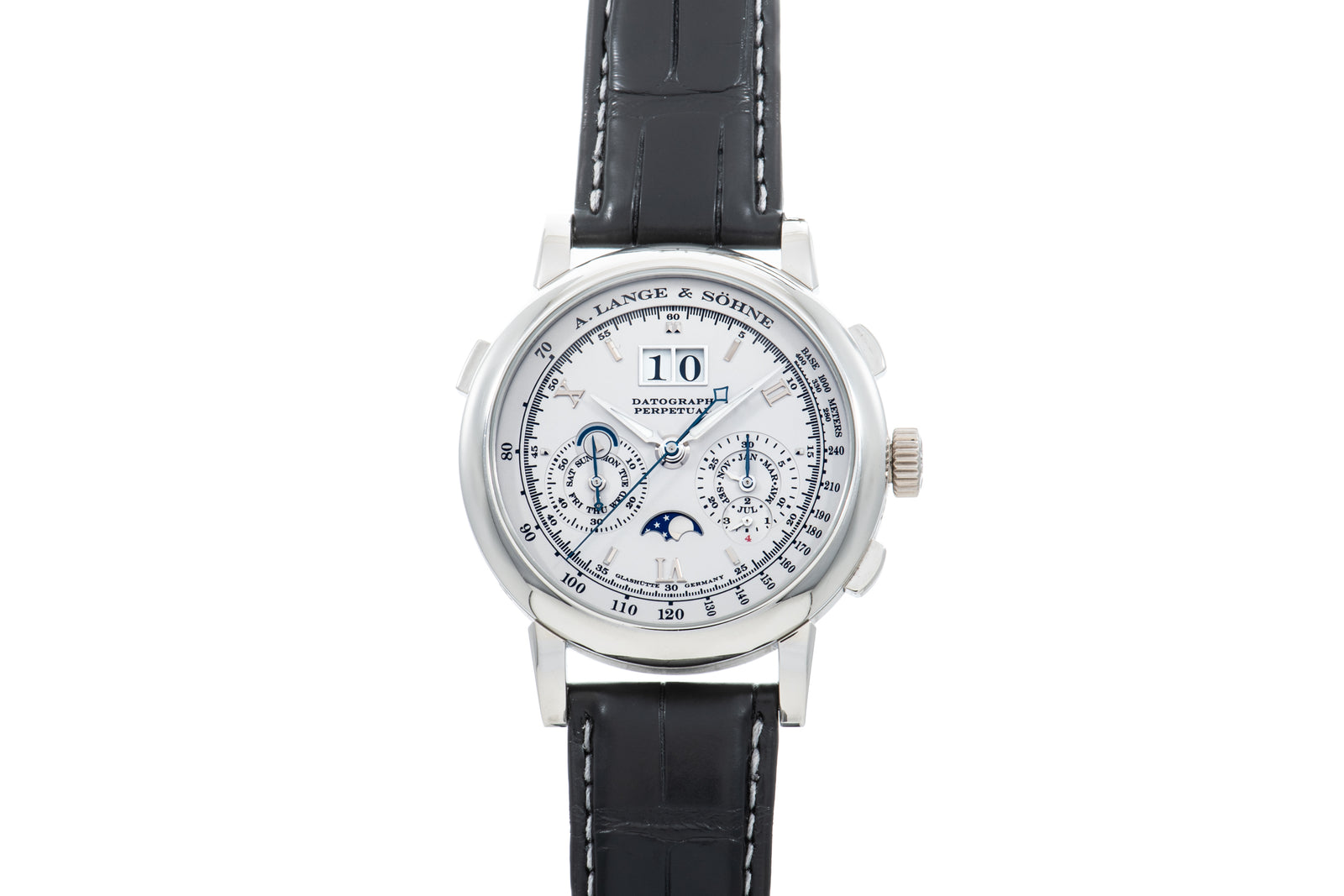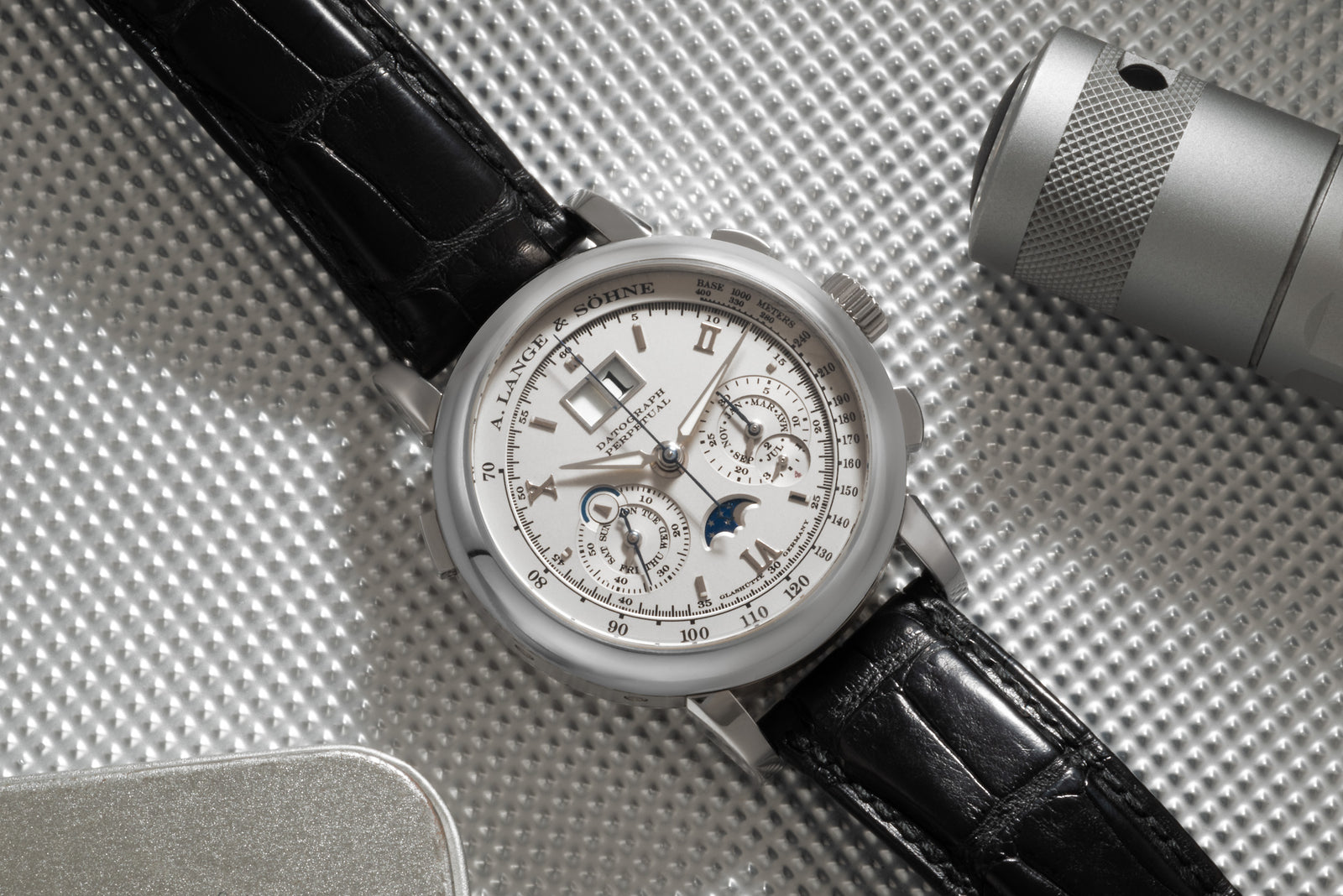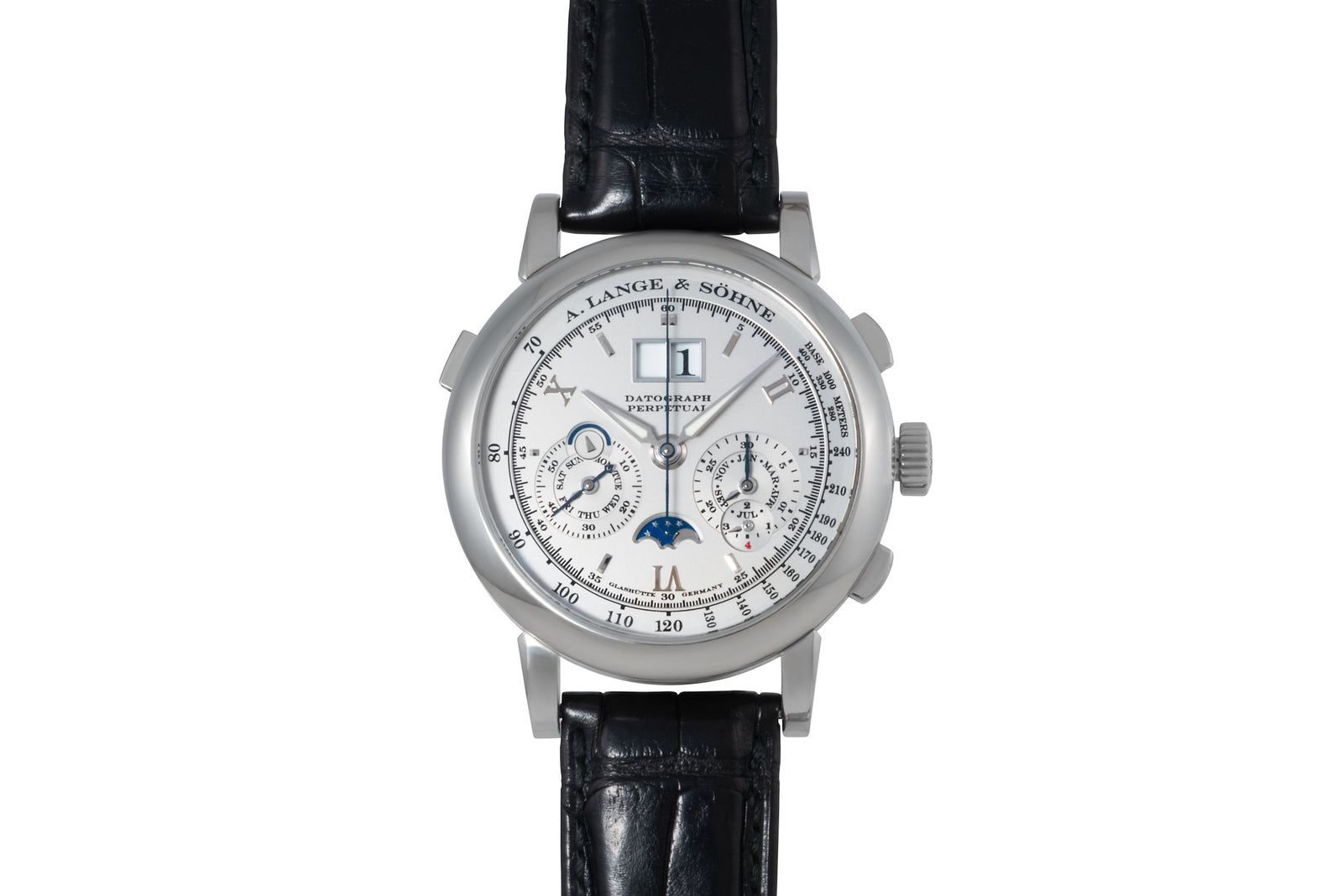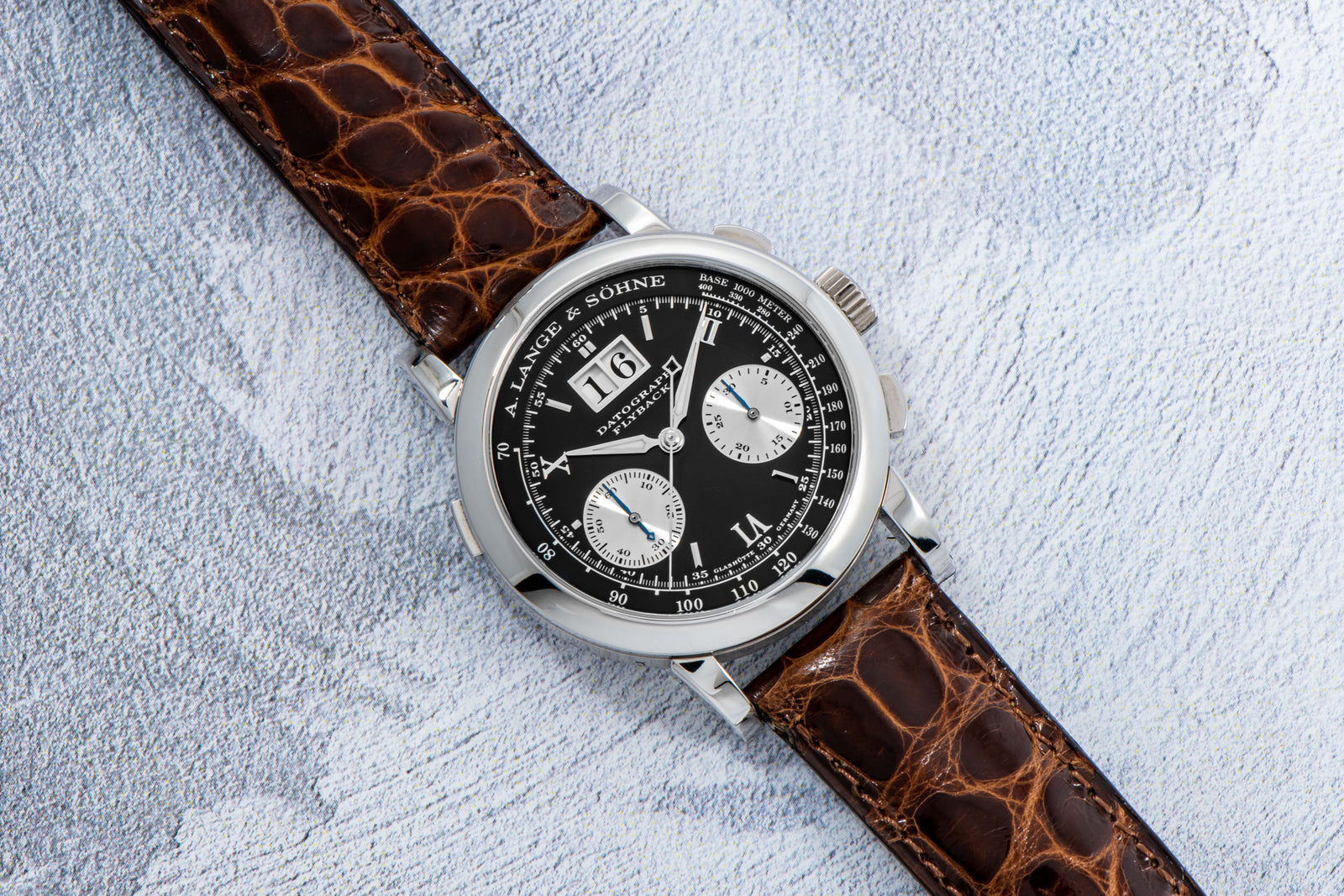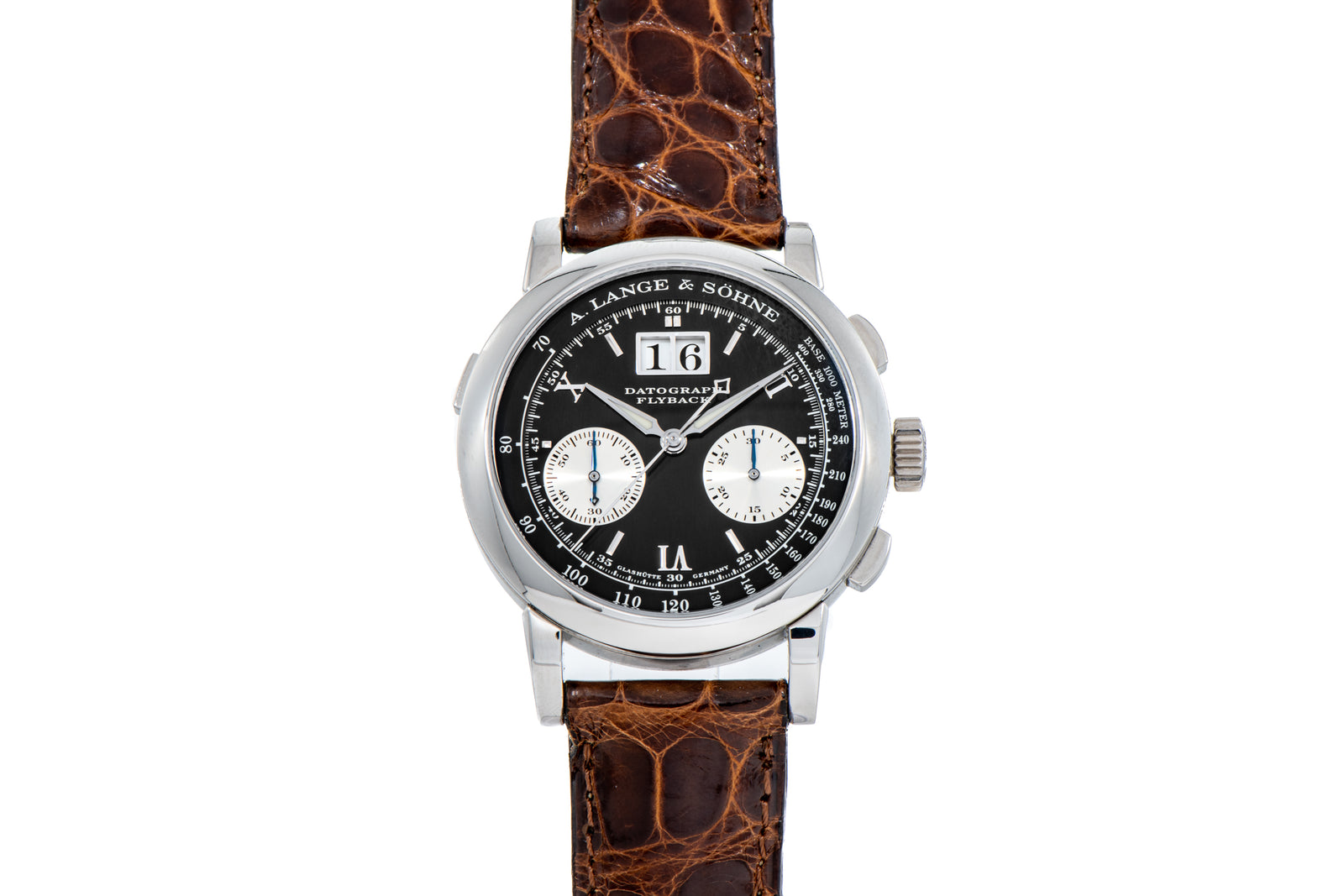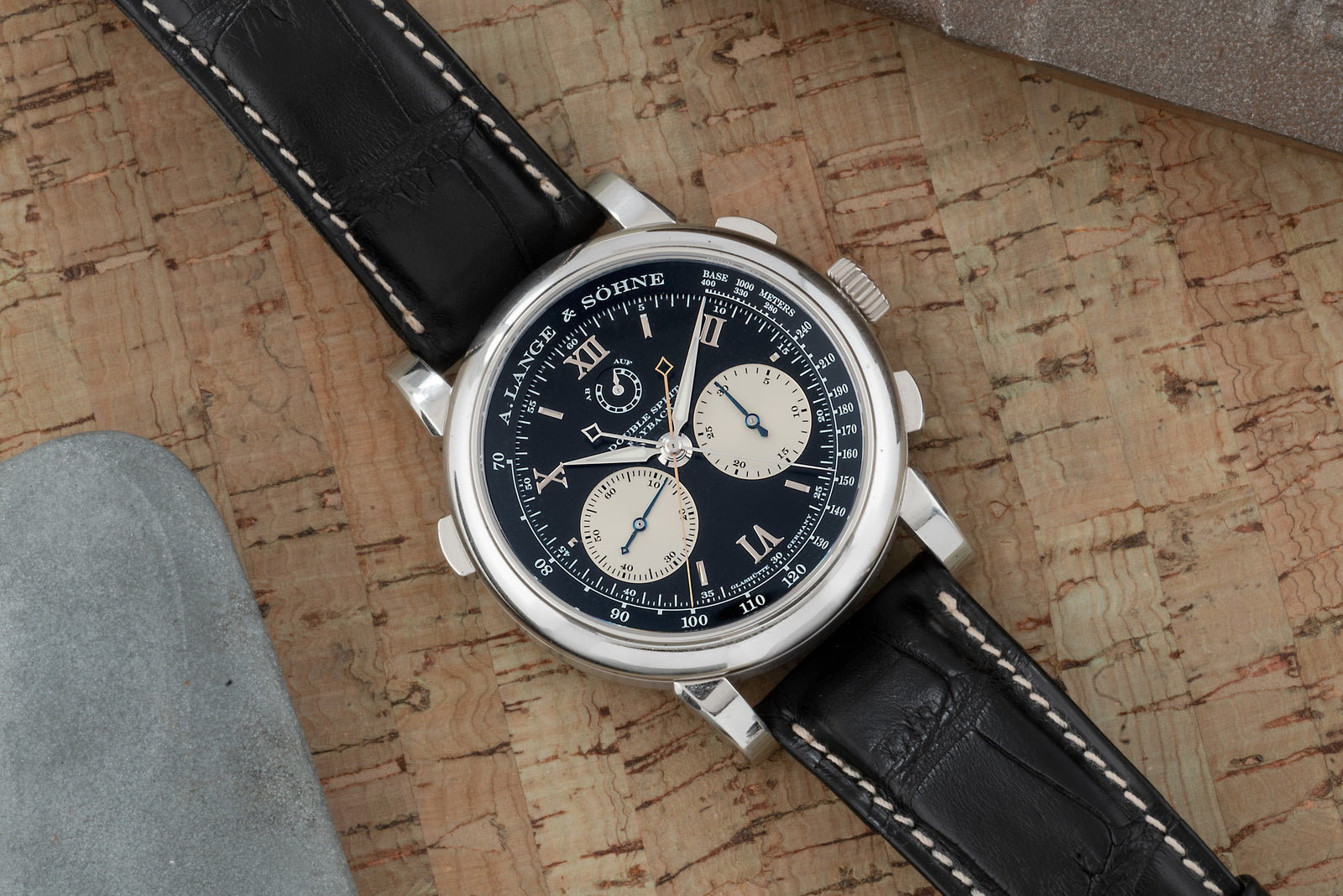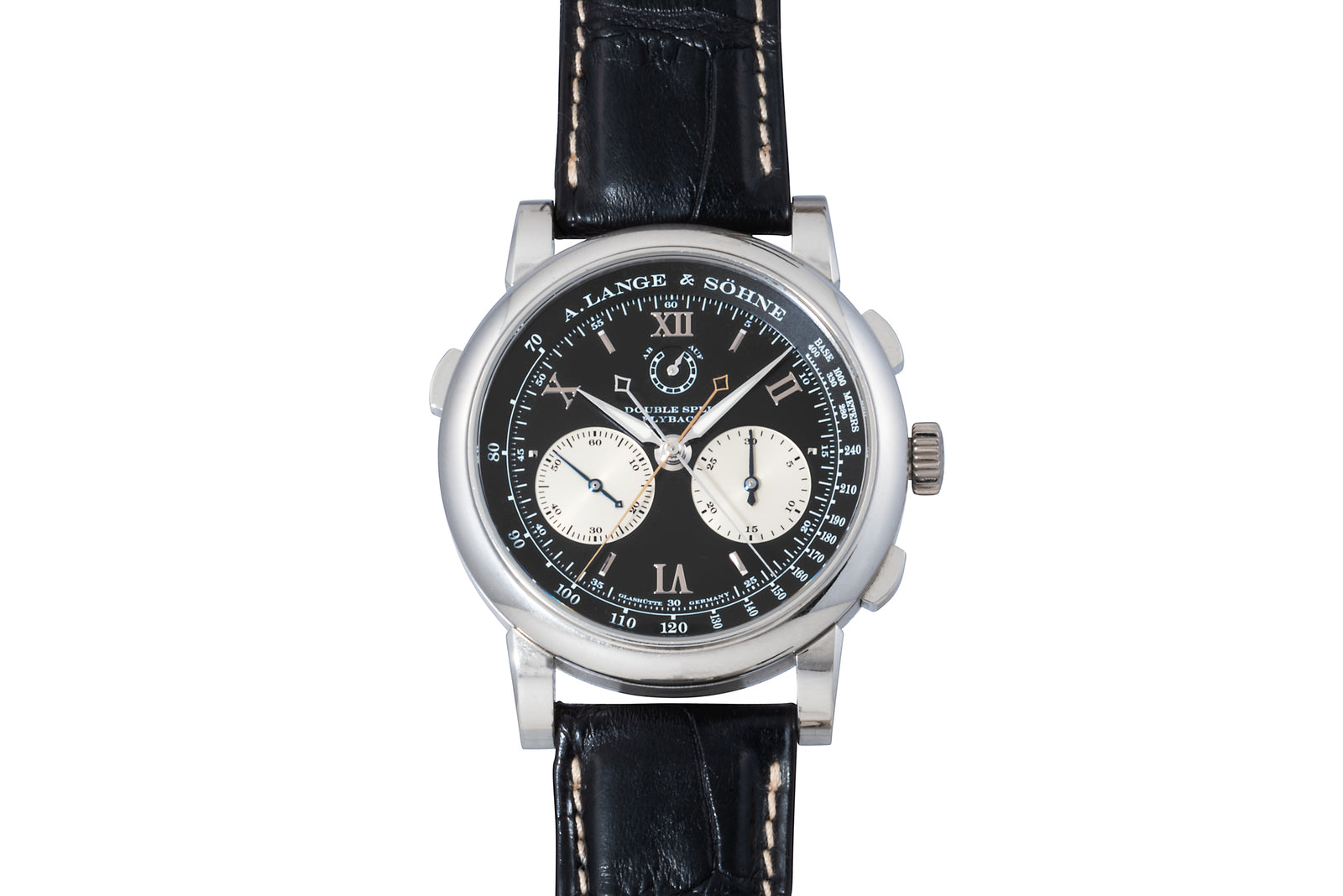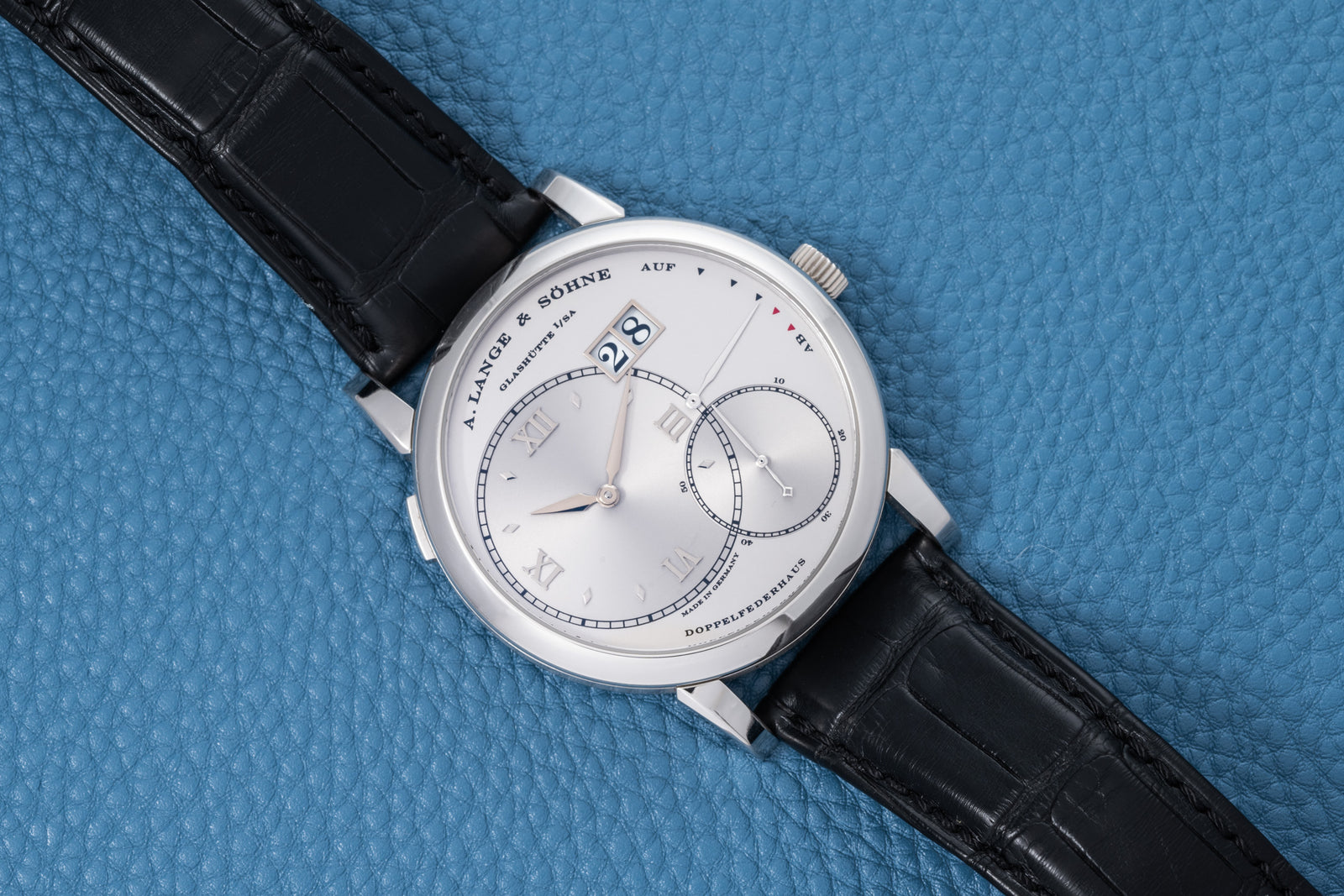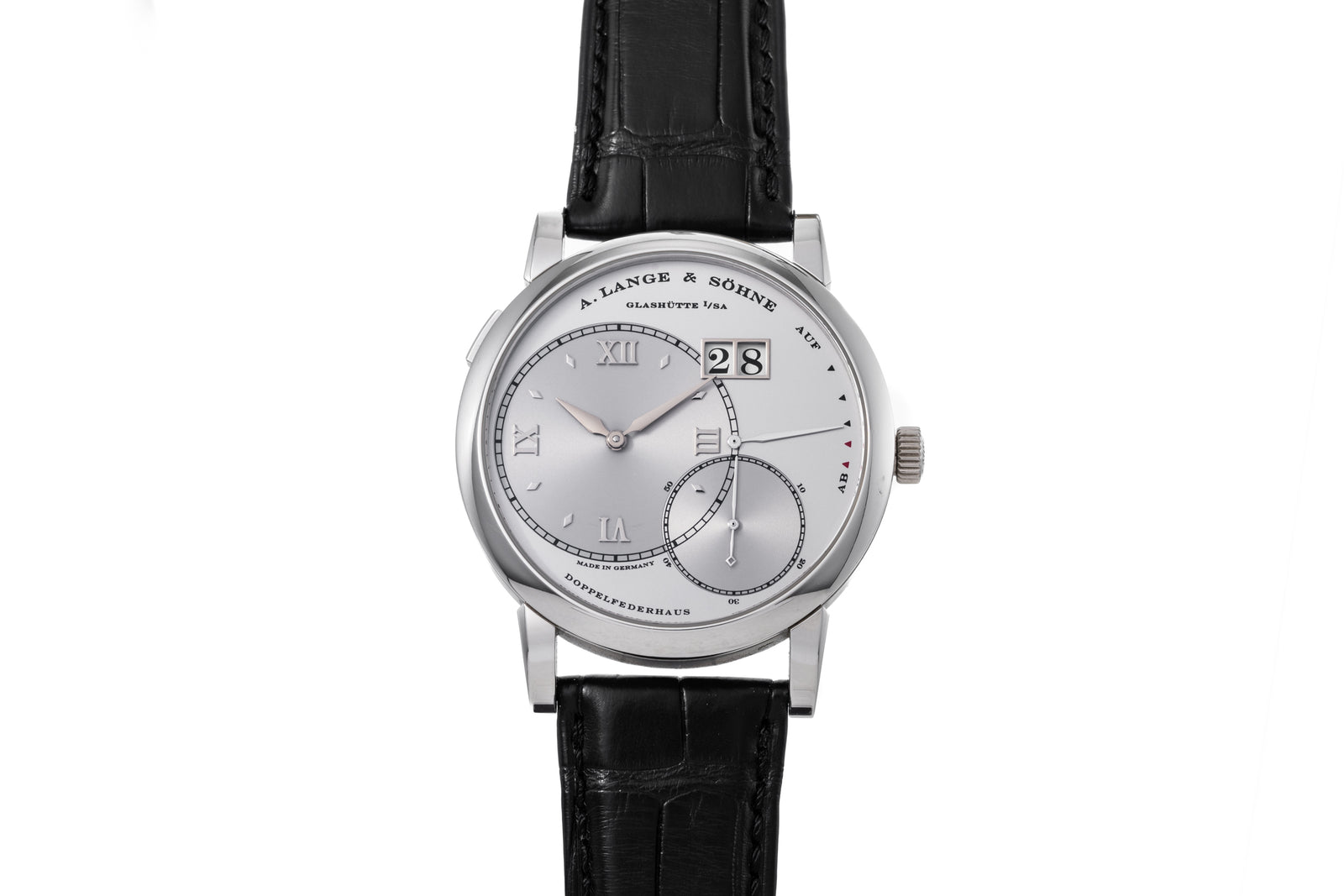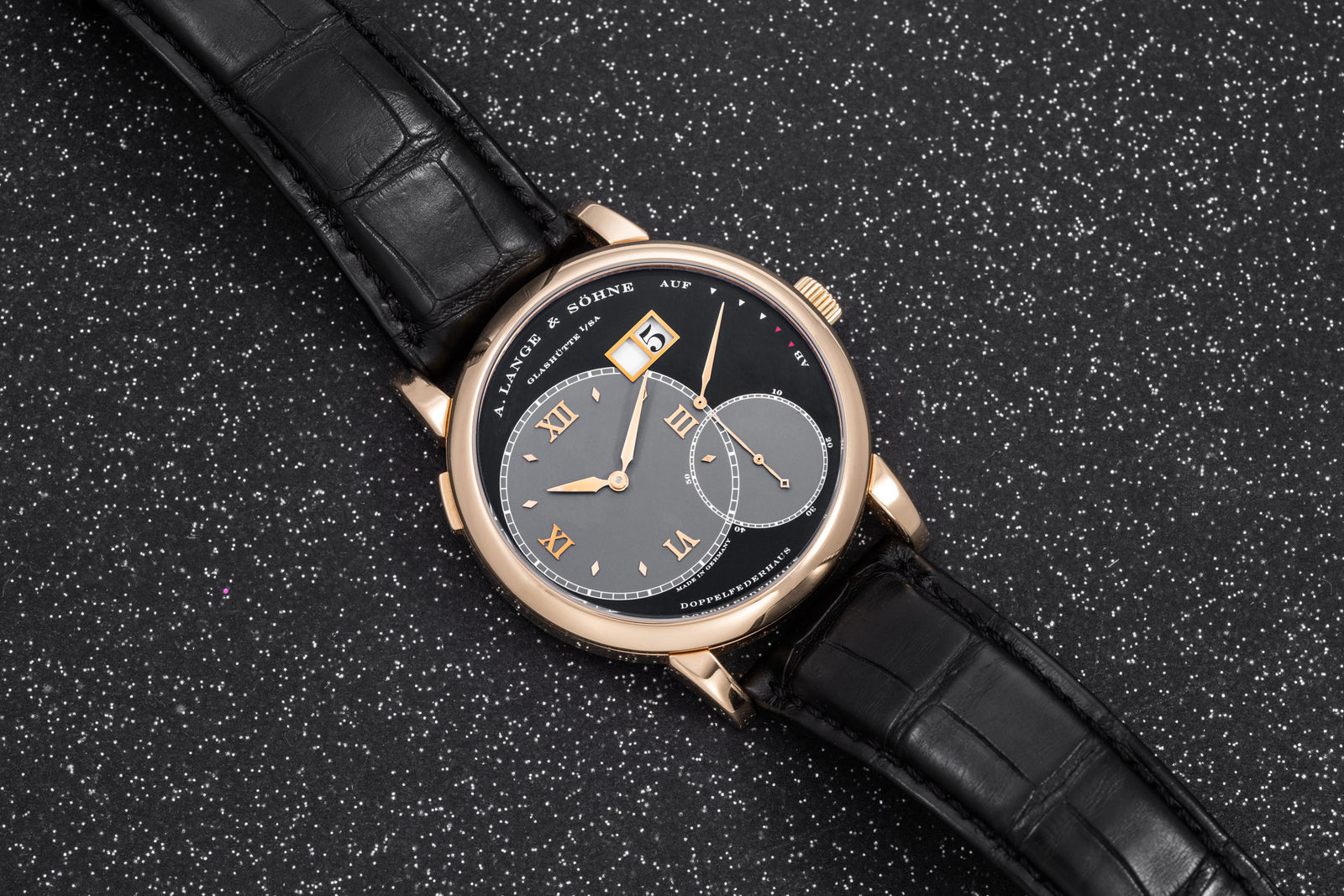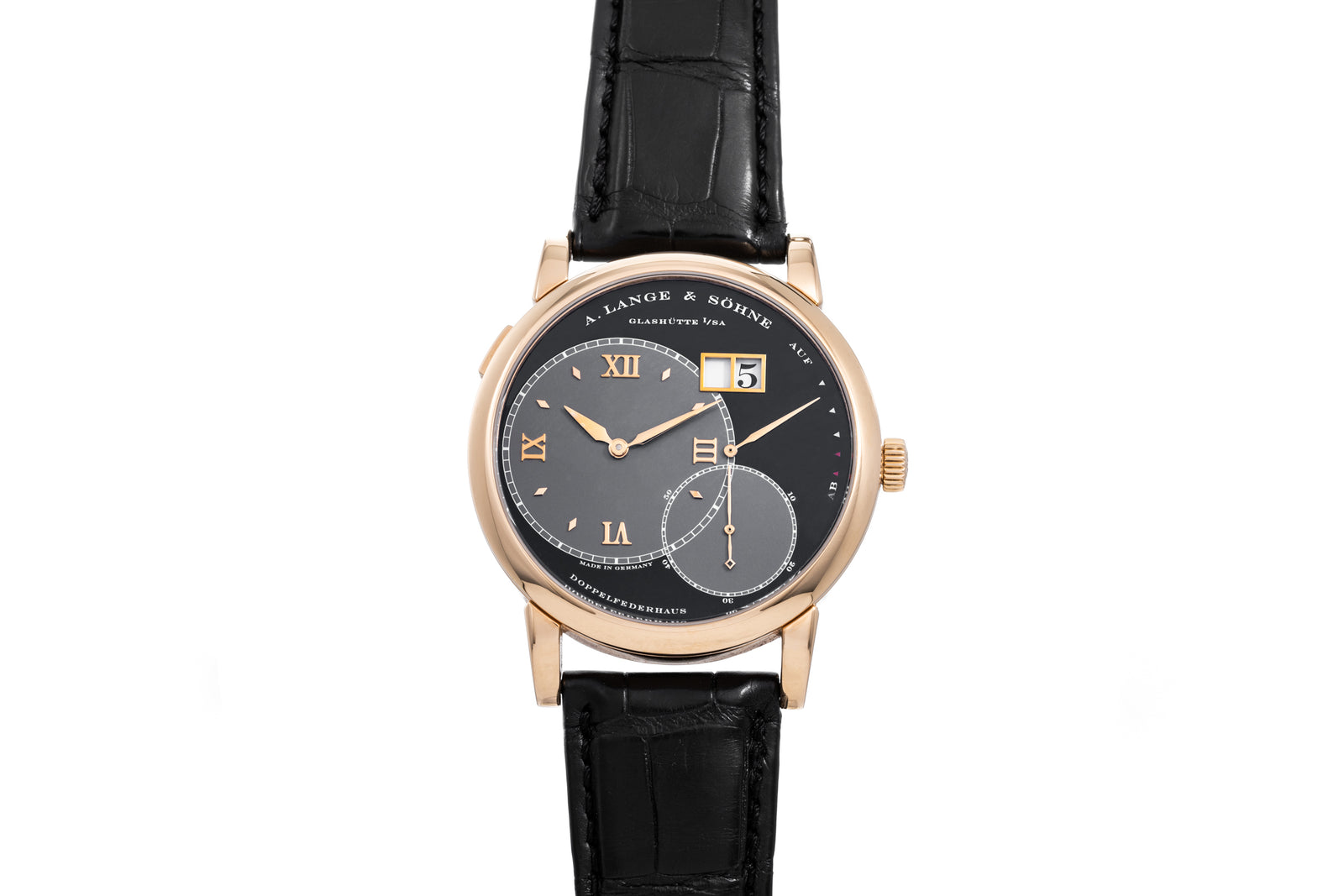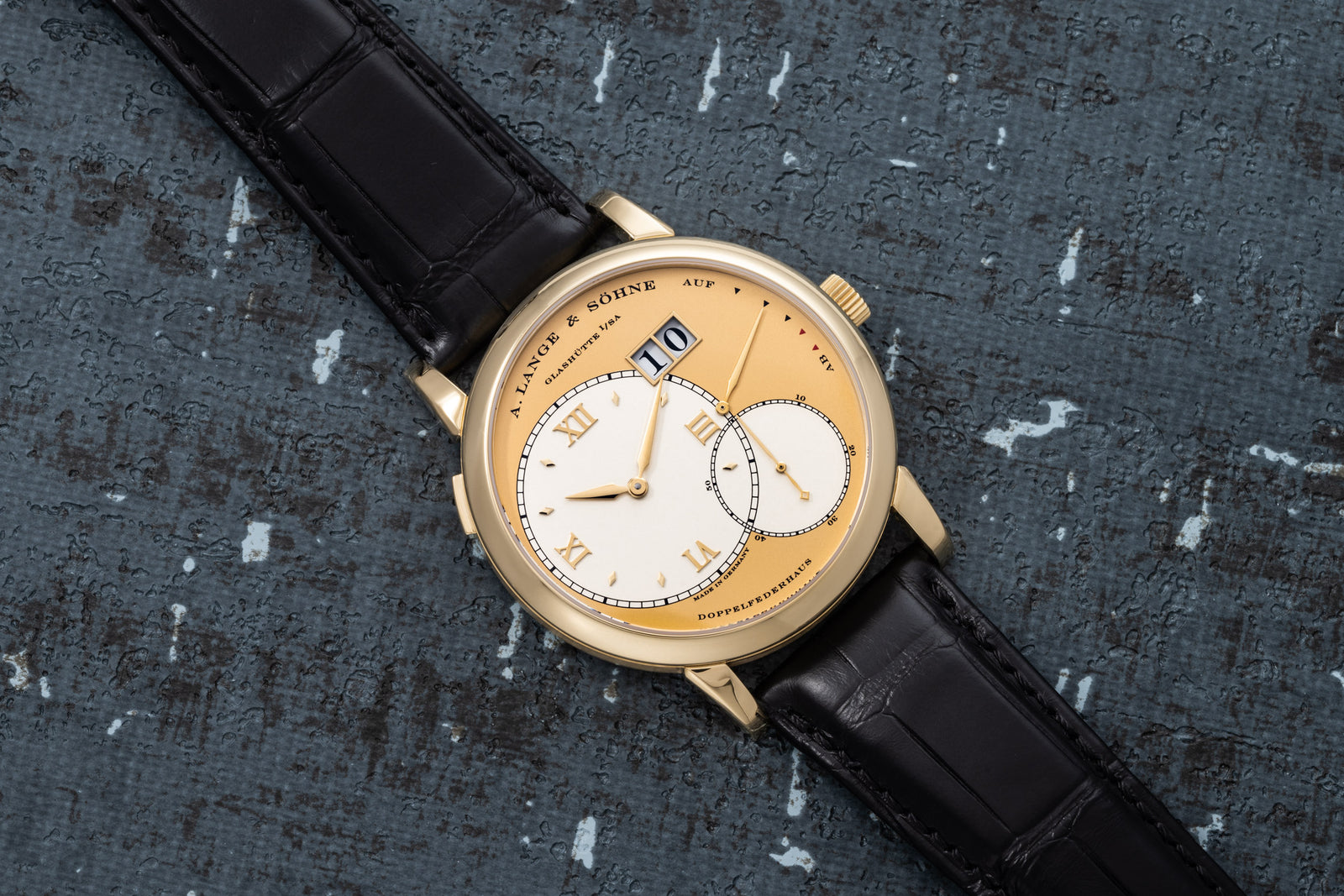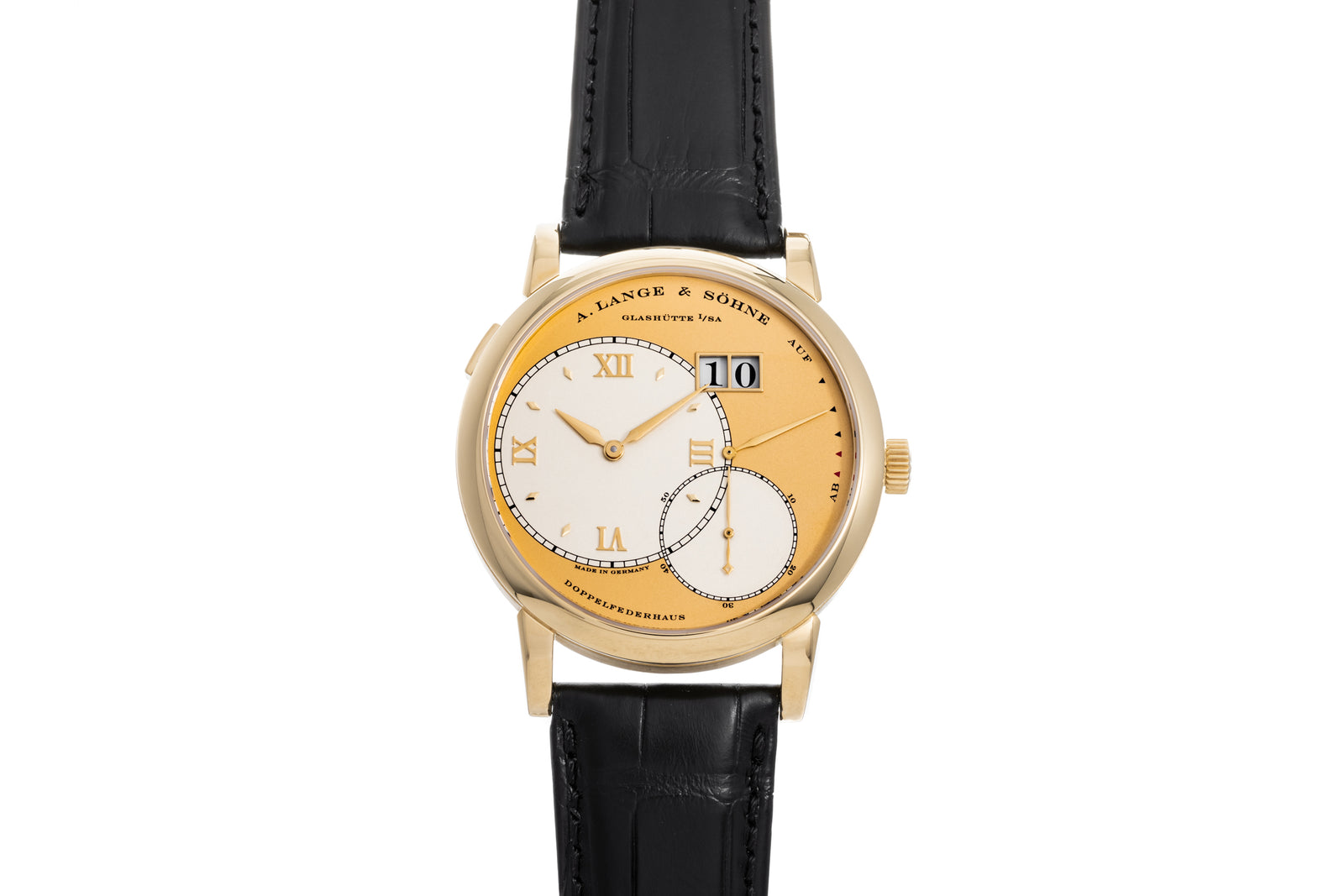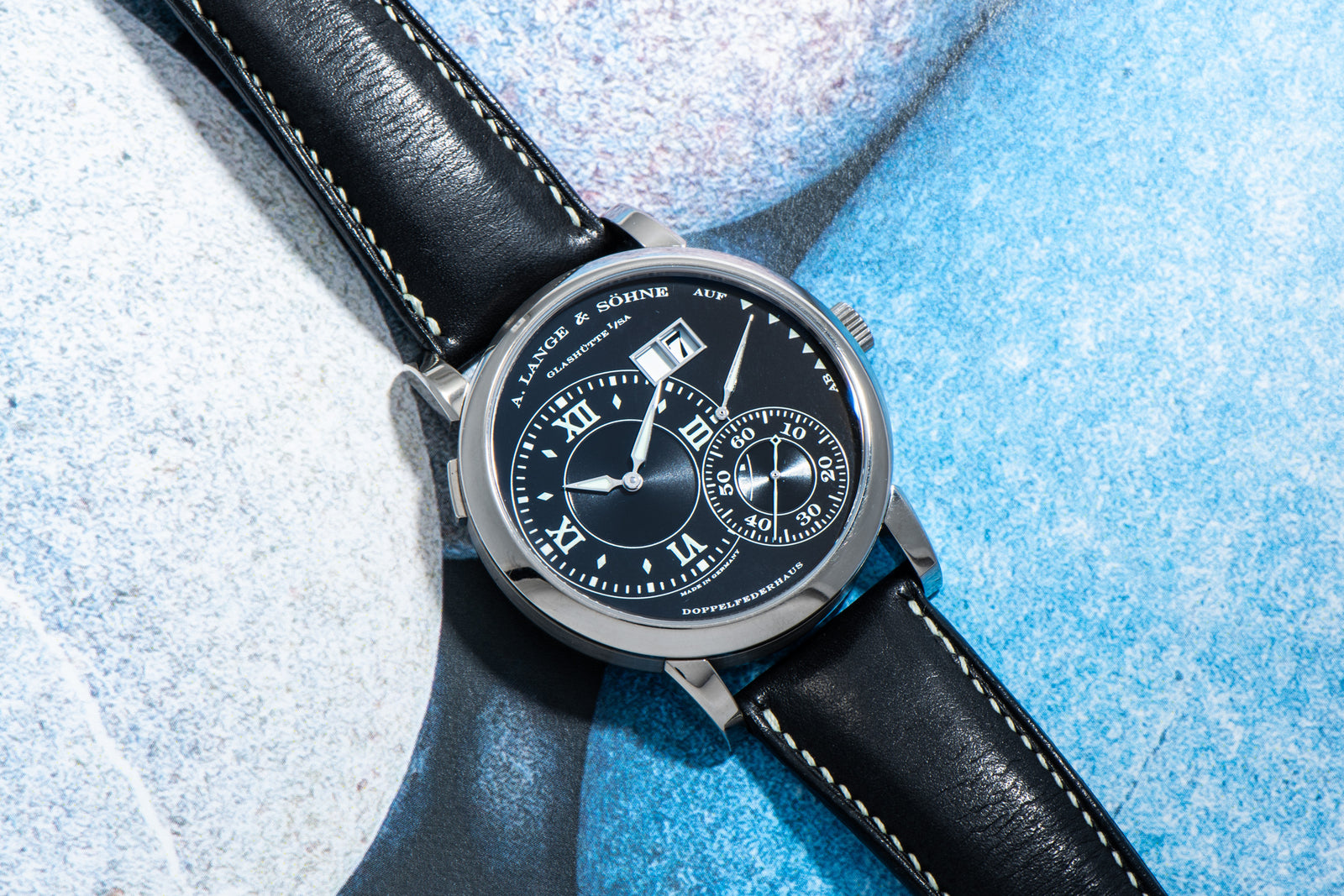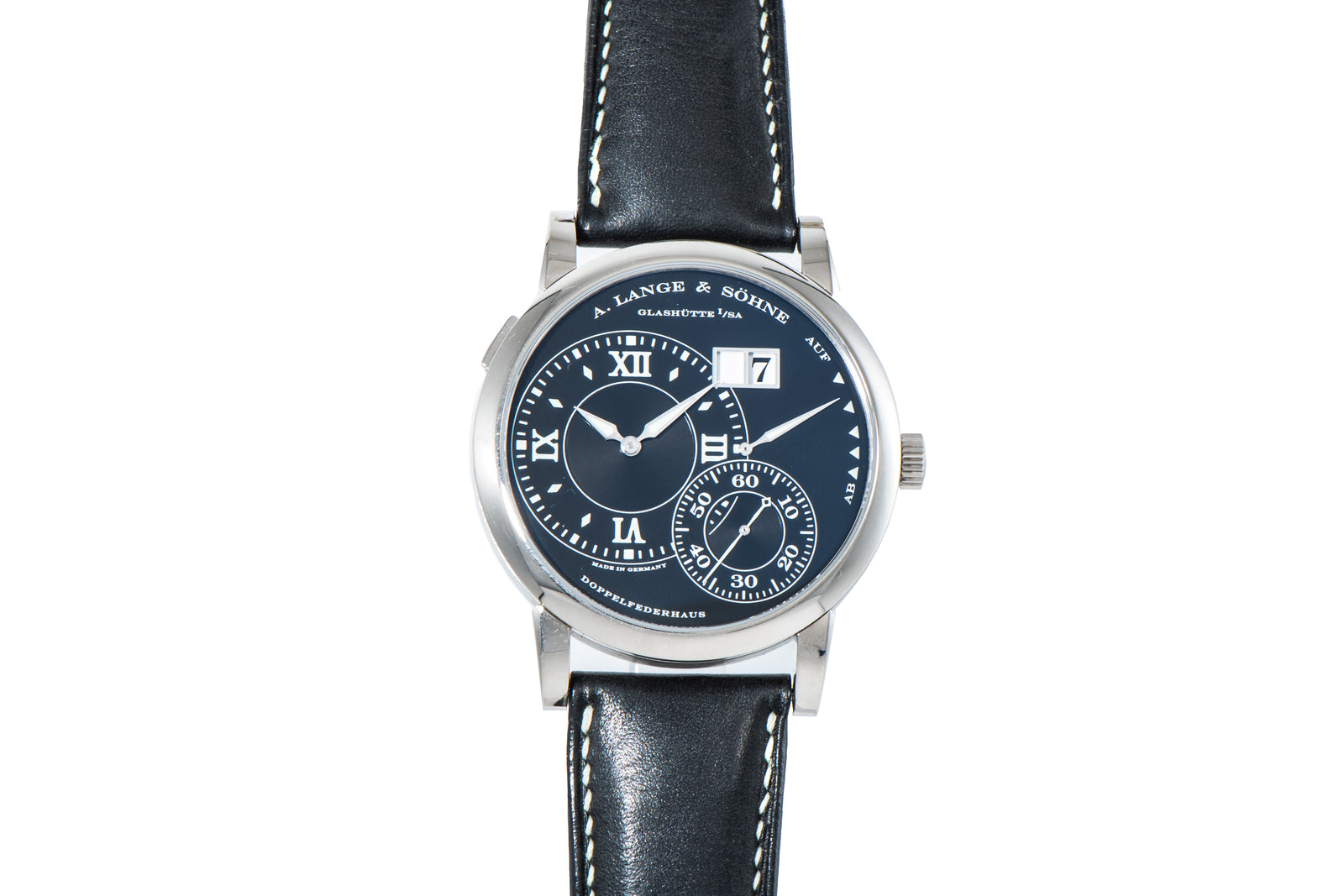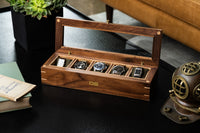Longines Weems Second-Setting Watch
- Soldspan>
- Sold
Why We Love it
–
Why We Love it
–In this age of global travel, it’s easy to take for granted the sight of contrails snaking across the sky. And yet in the early years of the last century, airplanes were a new invention. But thanks to the contributions of aviation pioneers like Alberto Santos-Dumont, whose achievements in aviation are matched by those in watches, flying became more commonplace.
Since aeronautical navigation posed its own particular challenges, there arose a need for specialized tools and timekeepers. Due to the distance traveled at higher speeds, any error in navigation—even if it was as little as 30 seconds off—would put the pilot off course by as much as seven miles. Therefore, just as John Harrison did for sailors in the Age of Sail with his marine chronometer, so too did Captain Philip Van Horn Weems do for pilots.
A native of land-locked Tennessee, Weems must have felt the call of the sea from an early age. At just nineteen, he enrolled at the US Naval Academy in Annapolis. There he developed an aptitude for celestial navigation, and during his tenure with the Aircraft Squadron Battle Fleet, he encountered airplanes for the the first time.
Despite the advances undertaken in the century between the development of John Harrison’s marine chronometer and the time Captain Weems joined the Navy, the tools and charts used in navigation were just as primitive. For example, Weems—and many of his fellow navigators—had been trained to use the American Nautical Almanac. This publication used tables, first published in 1757, that called for navigators to take measurements using observations that were so complicated that few navigators could even do them.
In Weems’s words: “… it may be remarked that there is no disgrace in being lost in the air. This happens to the best navigators. The important thing is to reduce the periods of being lost or uncertain of position to the lowest limit humanly possible.”
So in the late 1920s he set out to do just that—starting with the watch navigators used.
Until the late 1920s, a ship’s navigator would use a watch with hacking seconds that he would then set to the ship’s chronometer. However, despite the hacking seconds, it was still difficult for the navigator to make the seconds hand synchronize exactly with the chronometer. If it were not possible to move heaven, Weems reasoned, then he could raise hell.
His solution to the problem was to design a watch that had a movable bezell. The seconds would be printed on a disc that could be rotated using a second crown. A navigator sitting in an airplane cockpit could listen to the radio, which emitted a beep as each second passed, and adjust the bezel—which also showed the margin of error.
Quoth Weems: “Strange to say, keeping the watches running correctly is one of the most difficult matters in navigation.”
But his invention was as close to correct as he could get, and he knew the value in it, so he filed for several patents for his invention, which he called the Second-Setting Watch.
The most famous examples that resulted from his patents were made by Longines.
First introduced in 1929, the Longines Weems Second-Setting Watch was the preferred timekeeping tool for navigators and pilots until the introduction of Charles Lindbergh’s version, the Hour Angle, in 1931. (Regarding Lindbergh, he actually wasn’t trained in celestial navigation—instead, he navigated using dead reckoning, even during his legendary transatlantic flight in the Spirit of St. Louis in 1927. It wasn’t until 1928 that he learned celestial navigation—from Weems himself).
Due to the dark and turbulent environment of an airplane’s cockpit, many examples of the Weems Second-Setting Watch were large for the era, at 40mm or even larger. Though this one is marginally smaller, at 33.5mm, it has all the look and feel of its larger cousins and is much easier to wear. Strap it to your wrist and you’re a regular Lucky Lindy, plotting a course for new horizons.
A:S Guarantee
+
A:S Guarantee
+Our Pledge
Analog:Shift stands behind the authenticity of our products in perpetuity.
Condition
Since our pieces are vintage or pre-owned, please expect wear & patina from usage and age. Please read each item description and examine all product images.
Warranty
We back each Analog:Shift vintage timepiece with a one-year mechanical warranty from the date of purchase.
International Buyers
Please contact us prior to purchase for additional details on shipping and payment options.
Shipping & Returns
+
Shipping & Returns
+All of our watches include complementary insured shipping within the 50 states.
Most of our products are on hand and will ship directly from our headquarters in New York City. In some cases, watches will be shipped directly from one of our authorized partners.
We generally ship our products via FedEx, fully insured, within 5 business days of purchase. An adult signature is required for receipt of all packages for insurance purposes. Expedited shipping is available at an additional cost. We are also happy to hand deliver your purchase in Manhattan or you may pick it up at our showroom.
Returns must be sent overnight or by priority international delivery, fully insured and paid for by the customer. A restocking fee may apply. Watches must be returned in the same condition as initially shipped.
We welcome international buyers, please contact us prior to purchase for additional details on shipping and payment options.
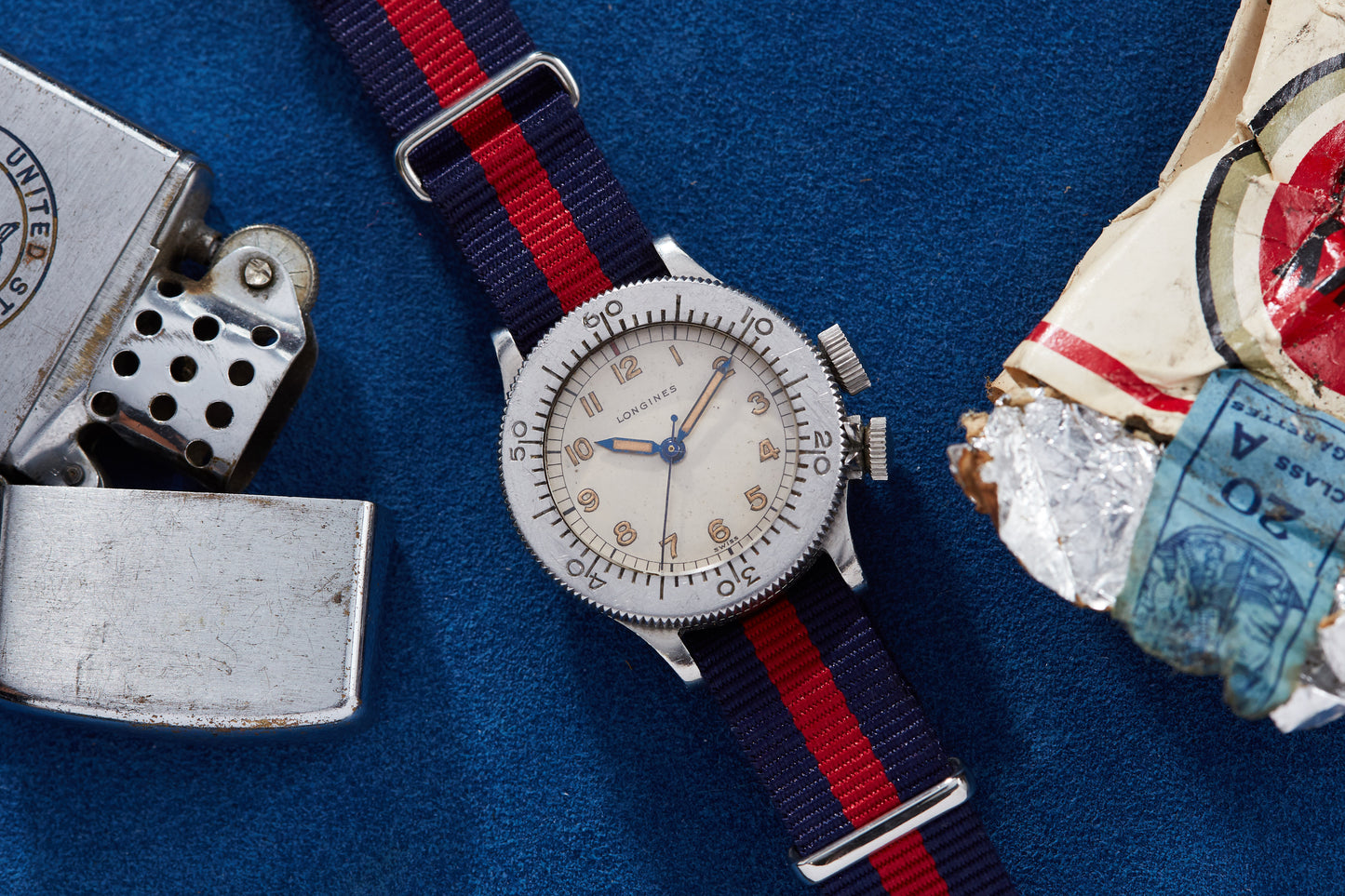
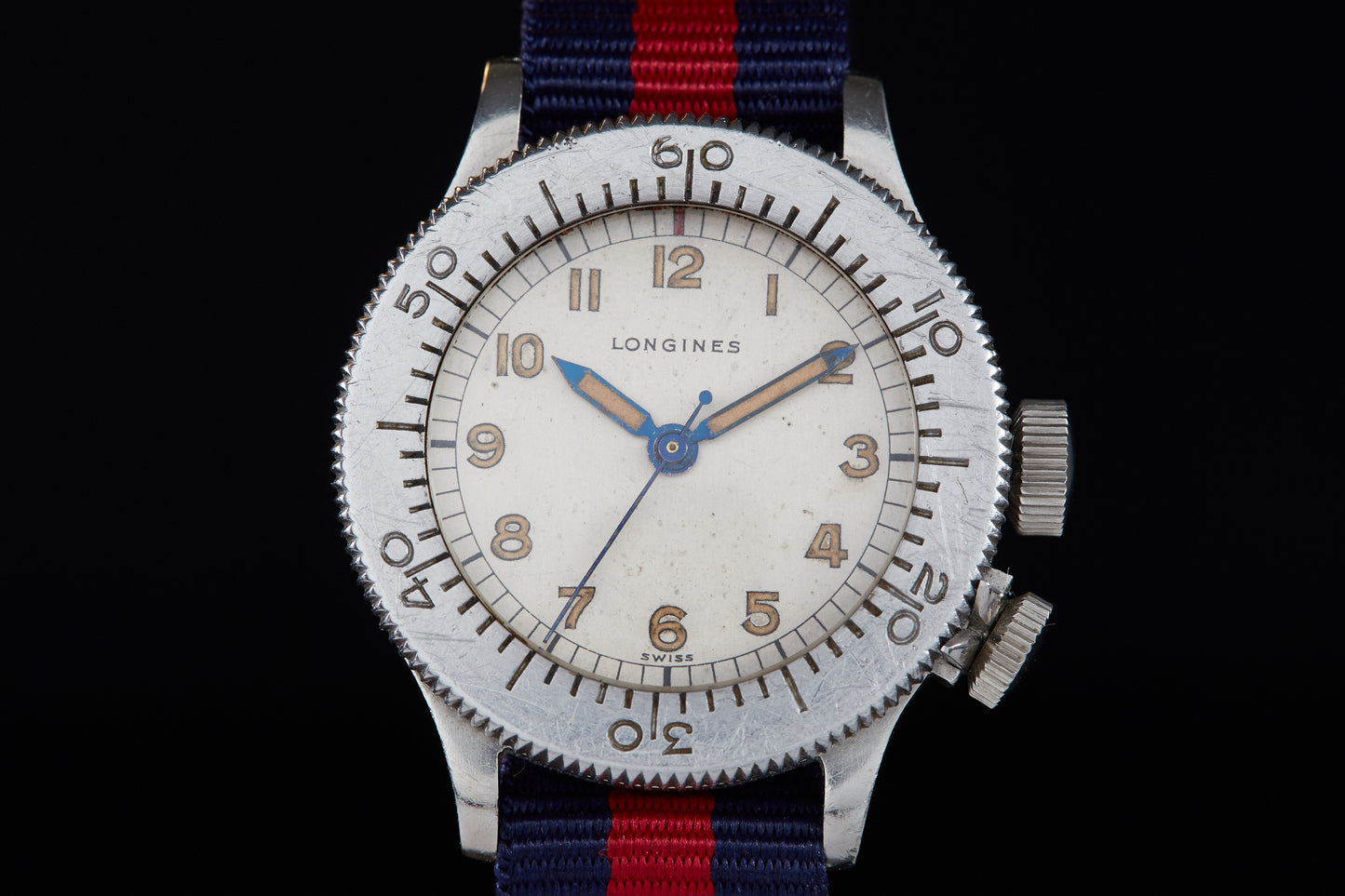
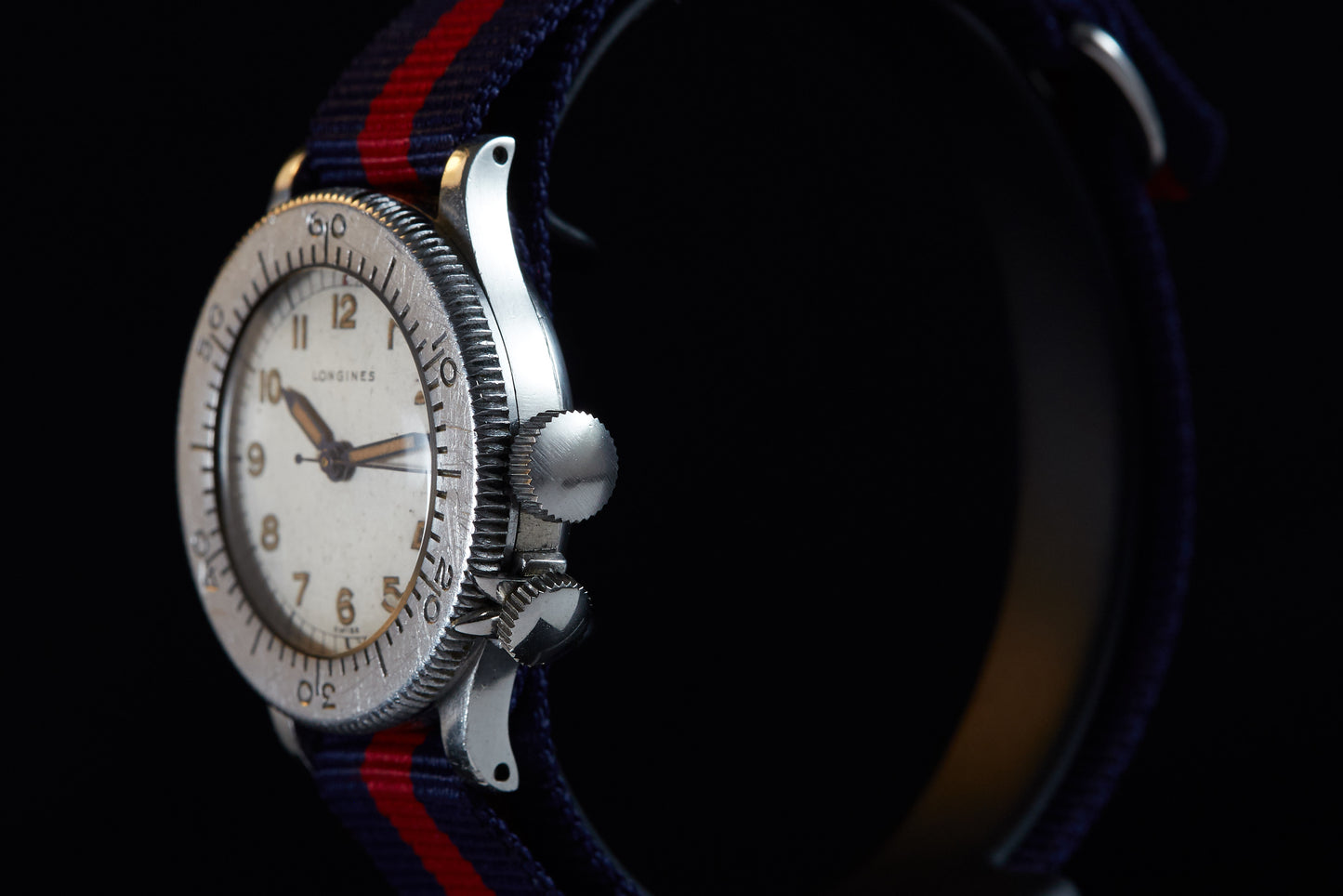
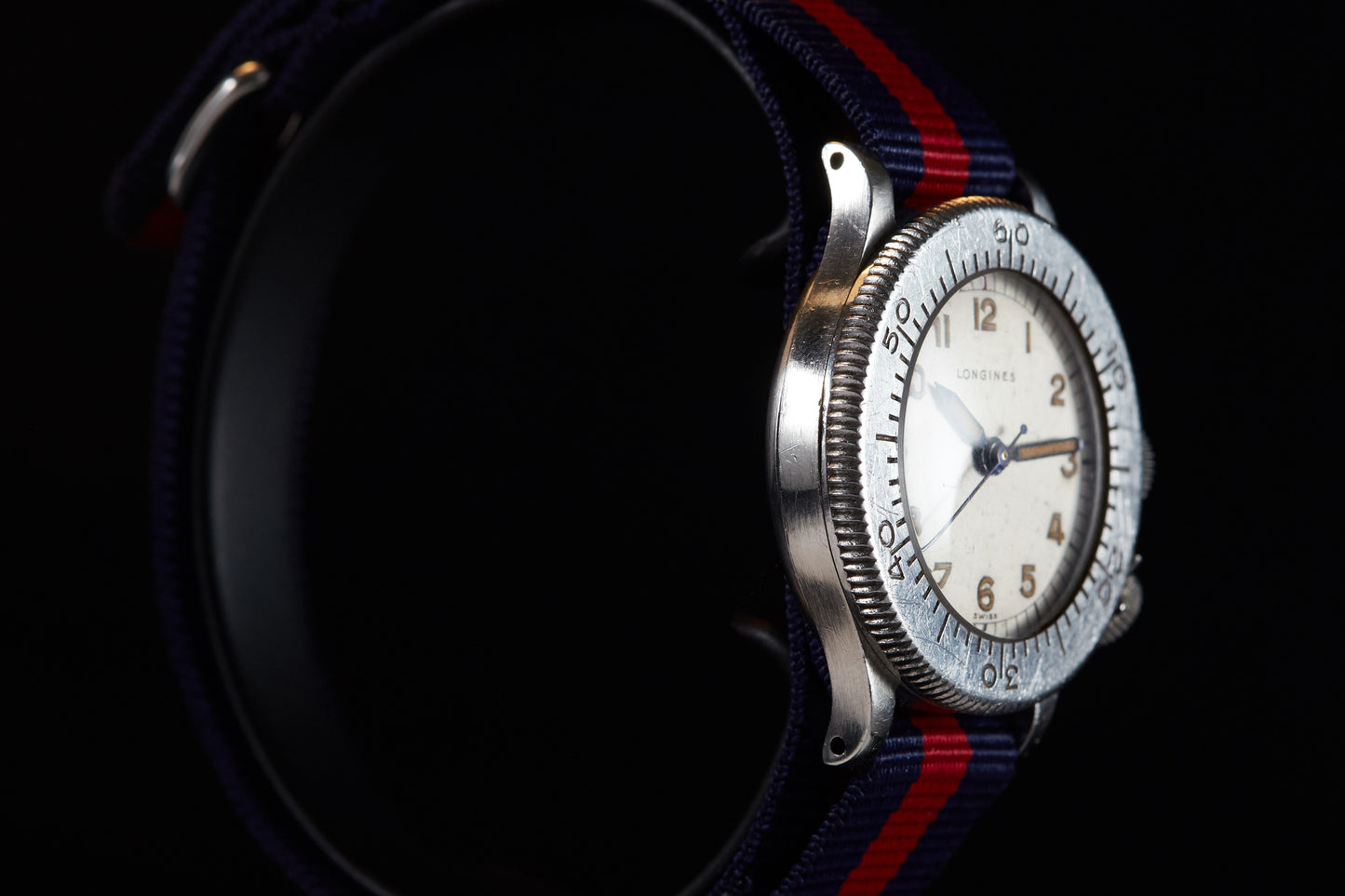
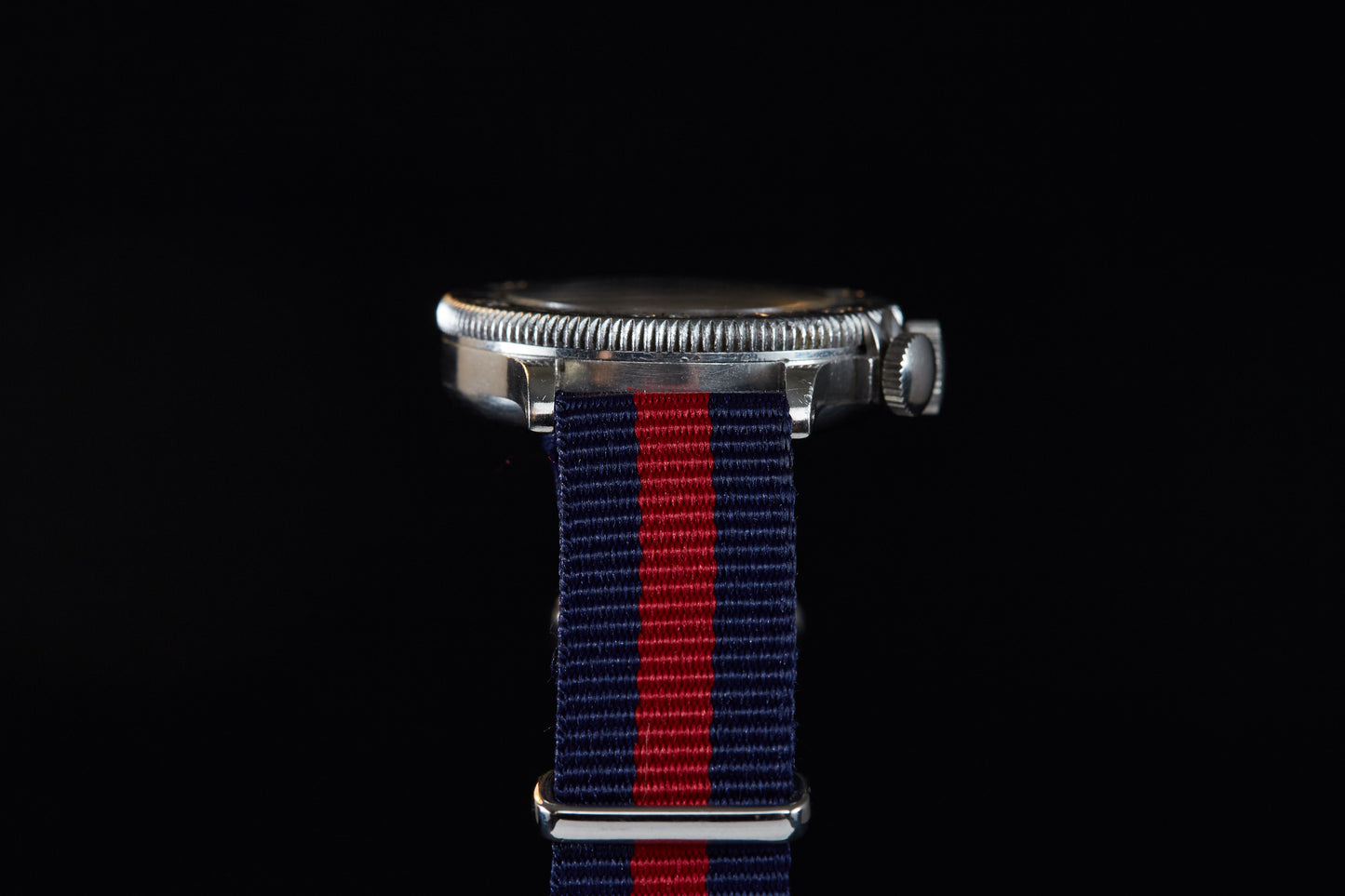
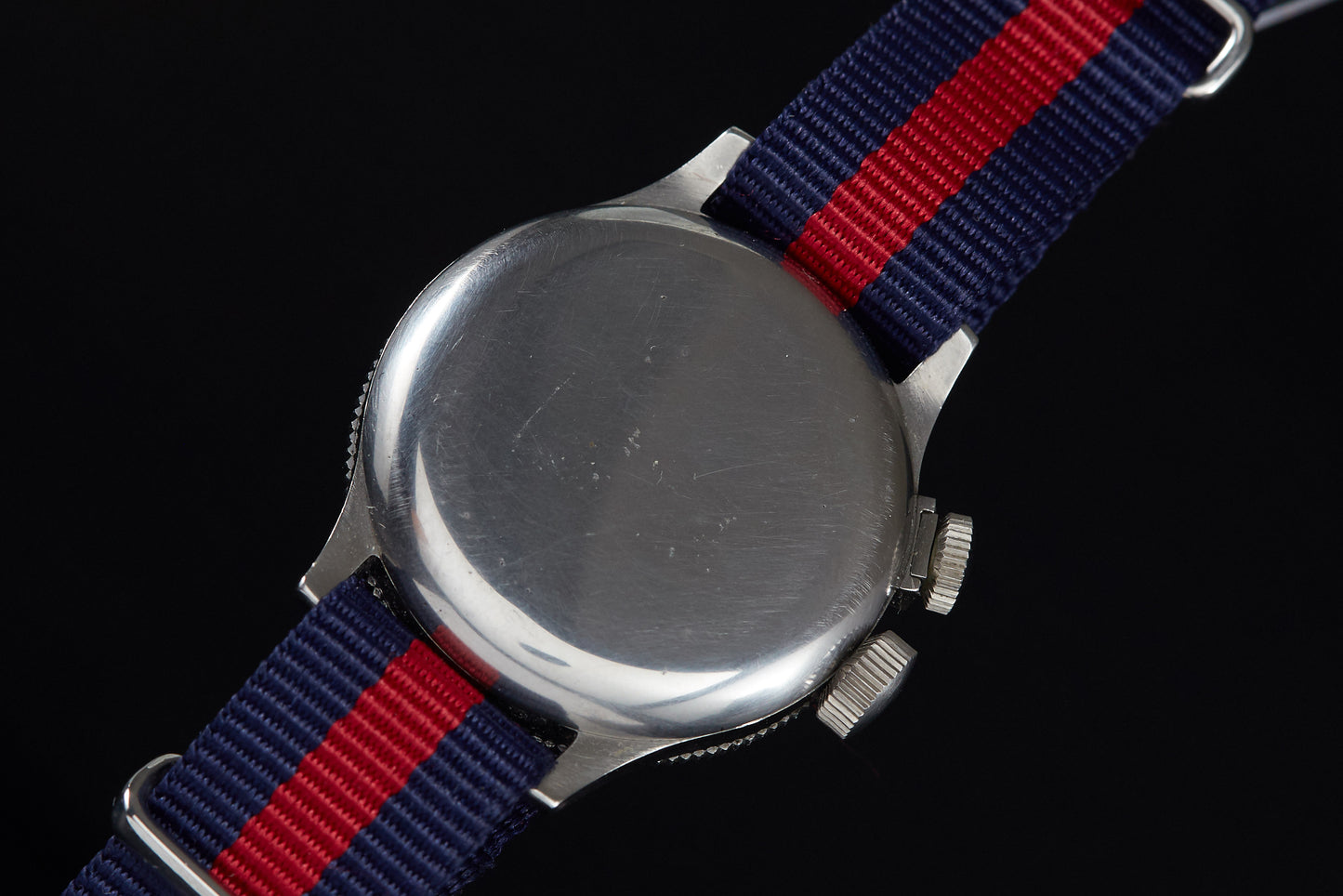
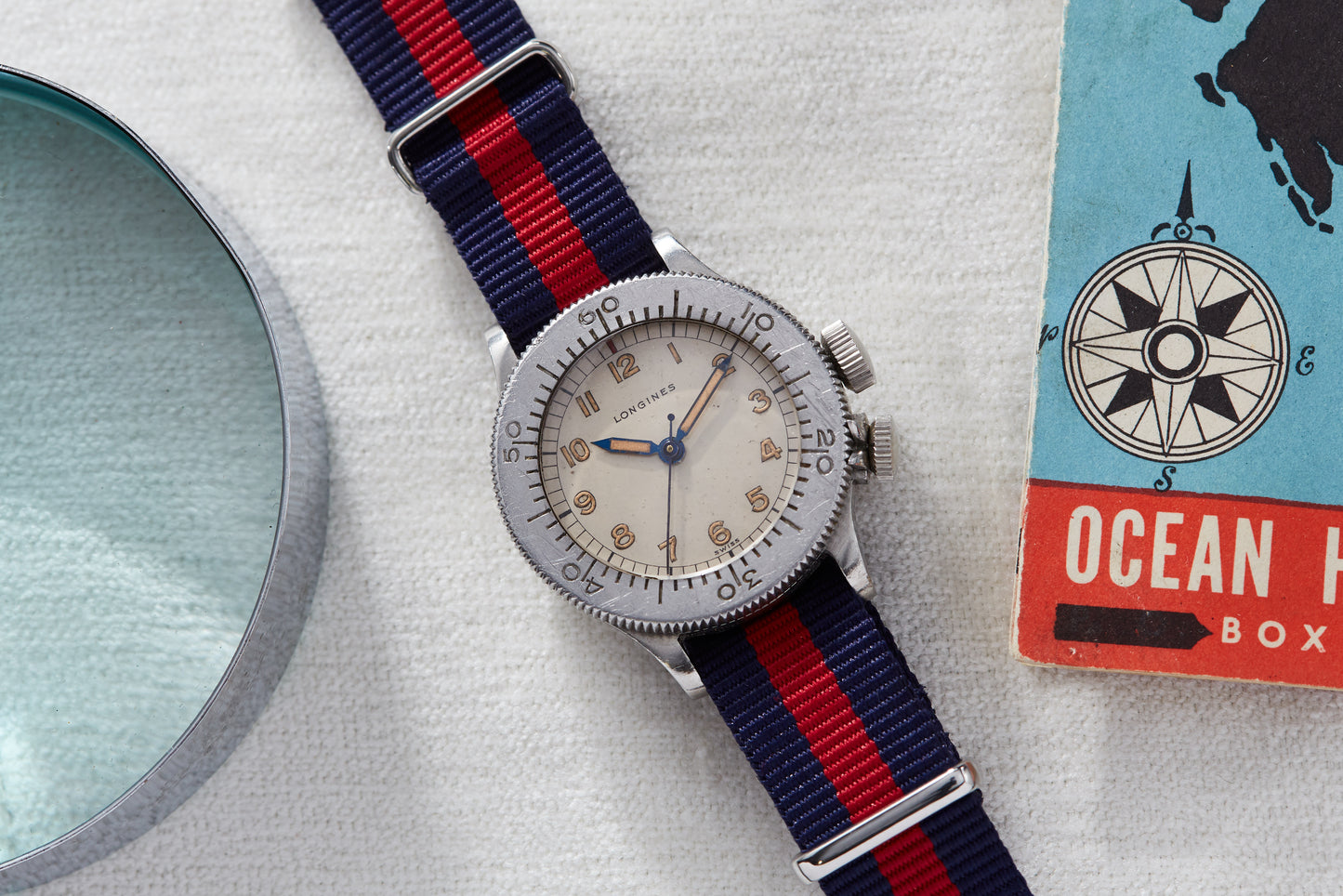
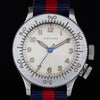
Longines Weems Second-Setting Watch
- Soldspan>
- Sold
